The wooden wonder
Plywood monocoque
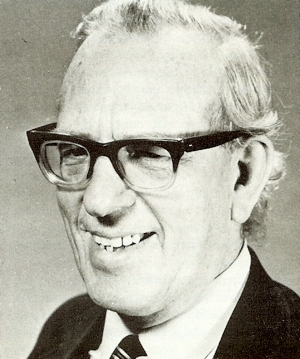
Frank Costin
He was involved in a number of car projects for various manufacturers including Lister and Lotus, where he contributed to the early aerodynamic designs; Marcos, which he co-founded with Jem Marsh (MARsh and COStin); and racecar chassis for Maserati, Lotus, and DTV. He also designed the Costin Amigo, as well as the TMC Costin which was built in Wexford, Ireland in the mid-1980s.
He went on to work on the Costin Sports Roadster in the early 1990s
1940-1950 de Havilland DH.98 Mosquito
モスキートは、1940年から1950年まで7,781機が生産された。機体にほとんど木材を使うという変わった構造で、当時でさえ時代遅れだと考える向きもあったが、生産にあたって家具など木工分野の工場も動員できる上、木製ゆえレーダーに察知されにくい、表面を平滑にできるため空気抵抗では金属製よりも優れるといった副次的なメリットがあった。
デ・ハビランド社はイギリス航空省と新型爆撃機開発の指名を受けて契約した。鉄とアルミニウムが不足している中、1930年代から合成木材を使った高速機の開発に実績があったデ・ハビランド社の技術力と、使用されていない家具業界の資源を利用し、木製の航空機の構想が決まった。
モスキートの試作機設計主任にロナルド・ビショップを据え、DH.91 アルバトロスを基に3箇所の機関銃砲塔と機関銃要員6名でマーリンエンジン2基を搭載したが、この設計では平凡な性能しか発揮しなかった。設計構想を何度かやり直し、エンジンを3基にする案もあったが、研究していくうちにまったく別の方向性に気づいた。それは、必要のない重量がかさむものを全て取り除くことであった。機関銃砲塔を1つ1つ撤去していくうちに、性能は次第に改善されていき、防御火器を必要としないほど高速ではないかと理解されるに至った。この結果、小型エンジン2基と乗員2名で機体の特徴が高速であること以外に何もない爆撃機が考え出された。それでも、1,000 ポンド (454 kg) 爆弾を搭載し、2,500 kmの距離を650 km/hで飛行できる性能だと算出された。
1938年の10月に航空省は、木製で武装を持たない爆撃機に疑問を拭いきれず、この構想を却下した。デ・ハビランドはこの構想に不安な点はなく、自社で開発を続けることを決意した。ついにウィルフリッド・フリーマン空軍大将の支持を得るに至って、1940年3月1日に試作機のB.1/40を含む50機が発注された。
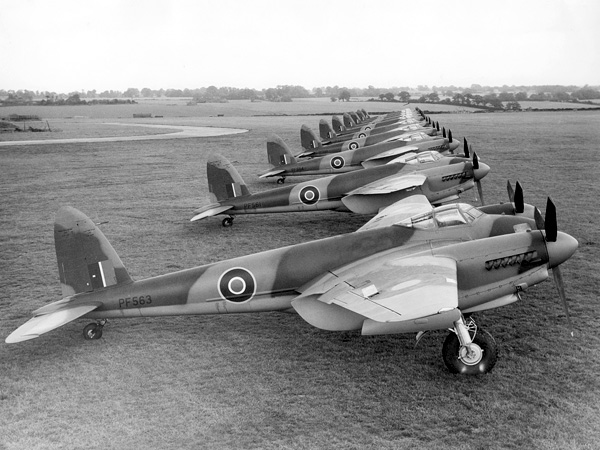
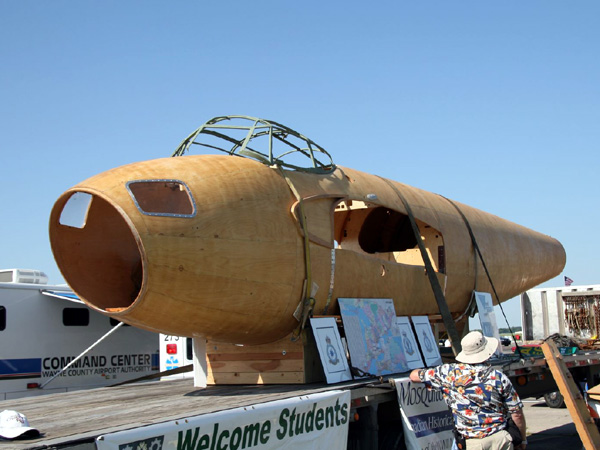
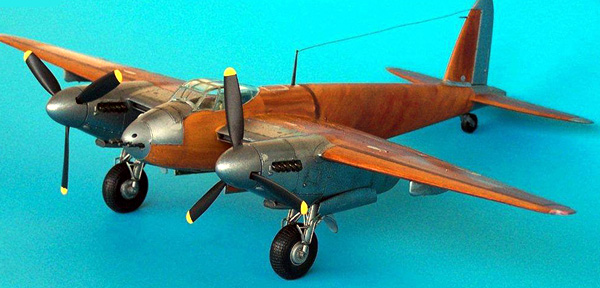
1967 Costin 'protos' fomula 2
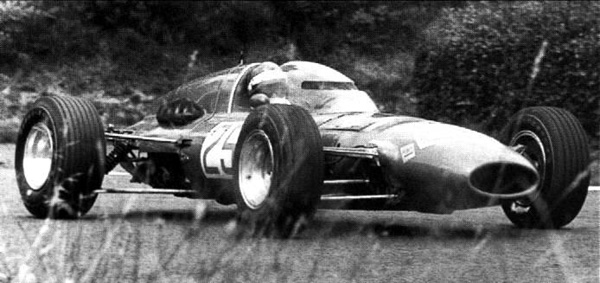
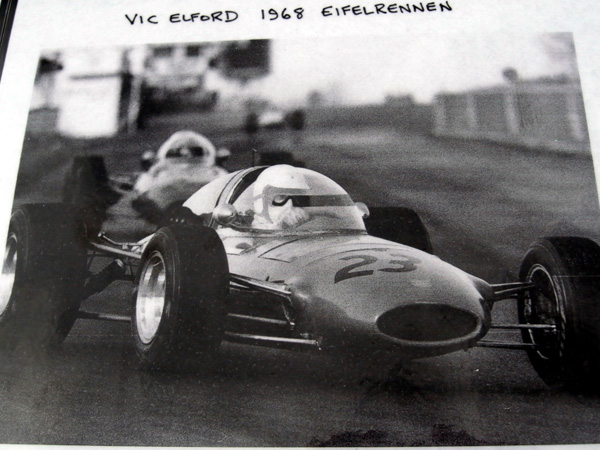
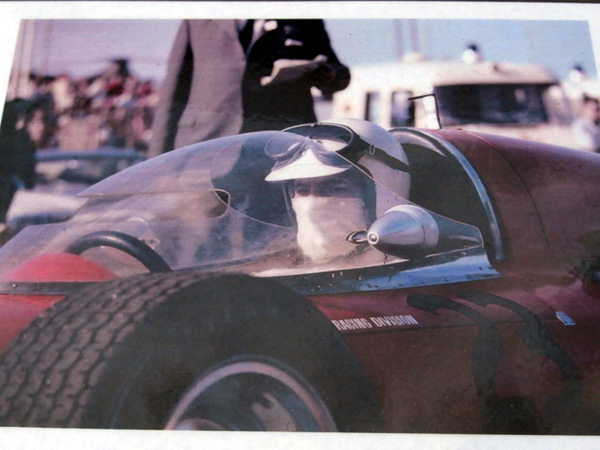
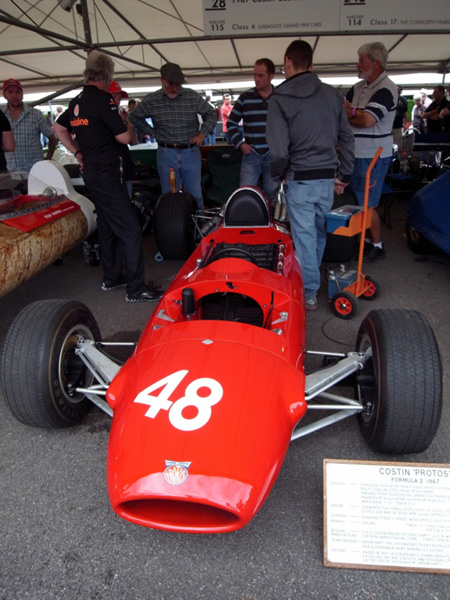
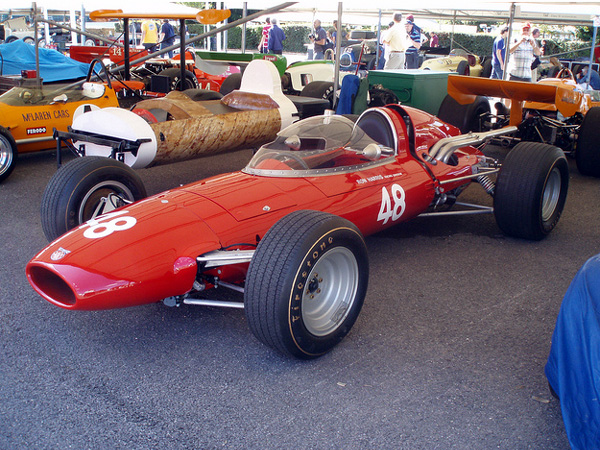
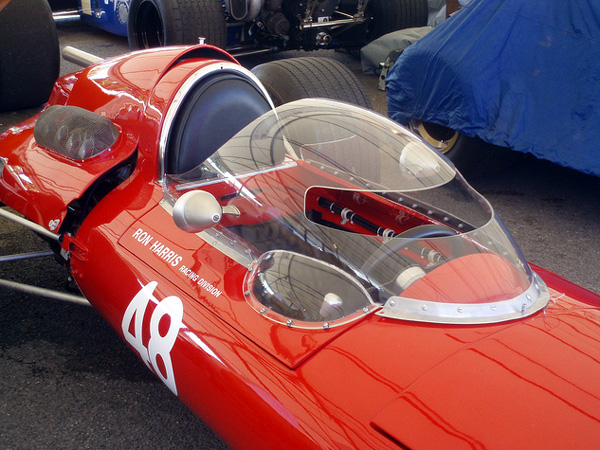
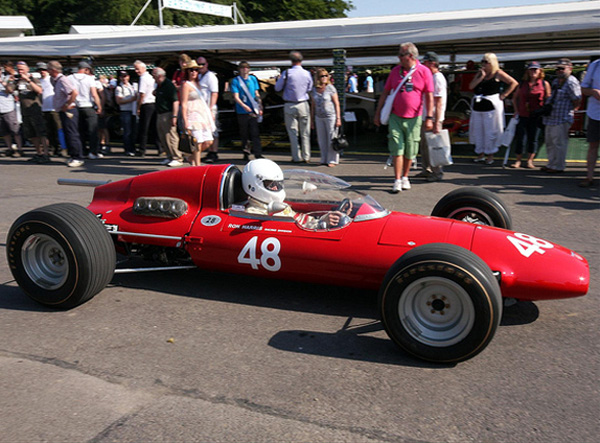
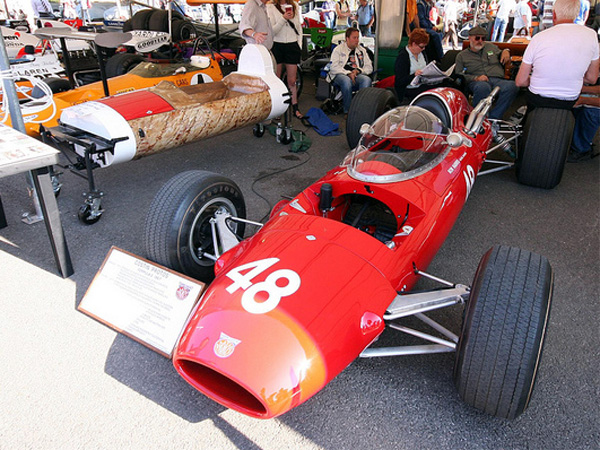
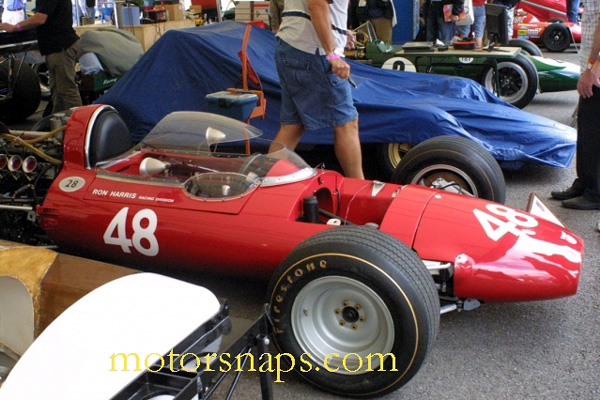
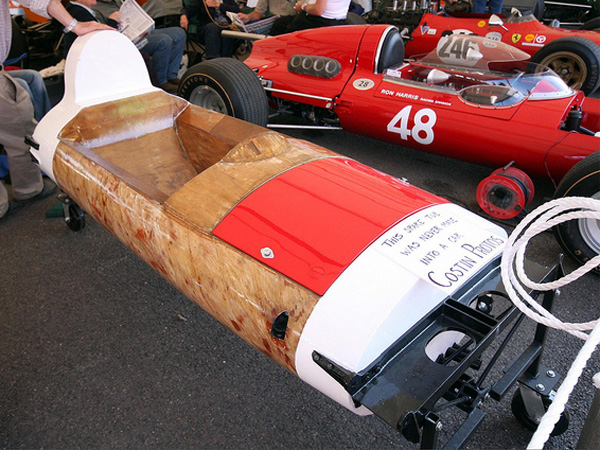
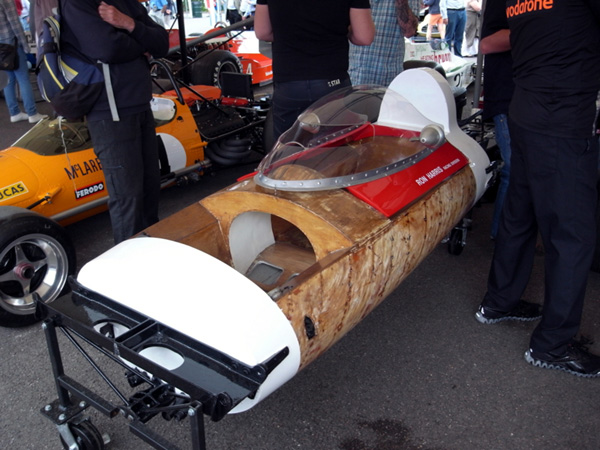
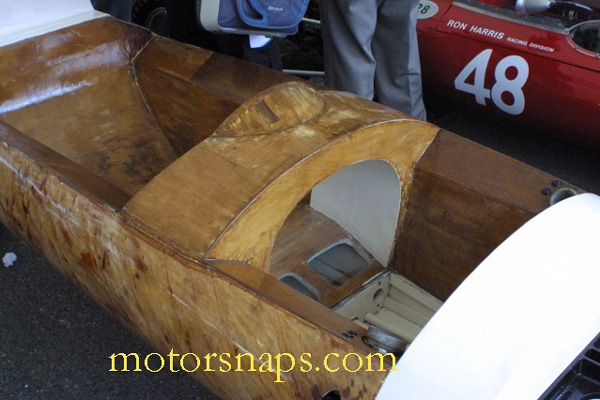
1967 Costin Nathan Imp
The Costin-Nathan GT coupe.

One of several old photos that turned up a little while ago, featuring competition cars parked in a racing circuit paddock, in the late 1960s. This head-on photo shows a Costin-Nathan GT coupe, a low-volume sports/racing car powered by a tuned Hillman Imp engine, and featuring amongst other things, a wooden central chassis.
The Costin-Nathan Imp, as it was first called, made it's debut at Brands Hatch in 1966, which is possibly the venue for the shot shown above (albeit a couple of years later). The open-top car was a joint venture between Frank Costin and Roger Nathan. Costin previously had worked for Lotus Cars, and then went on to form the Marcos car company (whose early products also featured a wooden chassis). In 1965, plans were drawn up between Costin and Nathan to build a new competition car. In the early 1960s Nathan ran a tuning company for the Hillman Imp, having previously raced Lotus Elites with some success, and it would be his tuned powerplants that would feature under the aerodynamic Costin bodywork. Twin-choke Weber carburettors, in addition to other revisions, would help the 1 litre Imp engine produce a quoted figure of 97bhp.
The Costin-Nathan Imp would make six race appearances during 1966 in spyder form, before a new, closed coupe was completed, destined to compete at Le Mans in 1967. The new coupe would be known as the Costin-Nathan GT, and cost GBP2150. The run at La Sarthe saw the car suffer electrical issues, leading to an early shower for it's drivers. Shortly afterwards Costin pulled out of the project, leaving Nathan to continue with the car's limited production run. The latter continued competing with the car, entered as either the Nathan GT, or Astra. Several privateers also took the GT to circuits across the UK. Whether the car above was driven by Nathan, or a private owner, I can't be sure. If anyone can shed light on the actual car shown here, or knows where it is now, please get in touch.
Interestingly, this thread on the forum dating to March 2009, looks at a rare surviving Costin-Nathan GT that has turned up in a garage. Return to Old Car Photos section, Page No. 10.
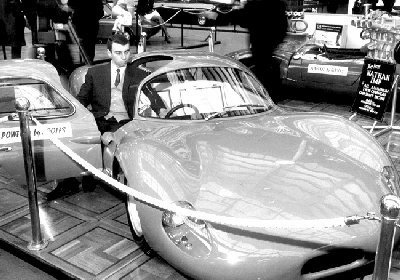
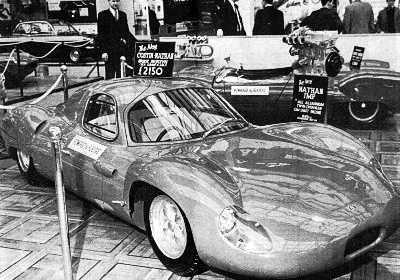
Roger Nathan had made a name for himself in the early sixties racing Lotus Elites and then set up in business developing tuning kits for Imps. In 1965 he colaborated with Frank Costin in the design and development of an Imp engined sports-racing car. The chassis and bodyshell of the Costin-Nathan Imp was based on the design of the Costin Sports Racer by Frank Costin. Frank Costin is the well-known aerodynamacist responsible for the design of many early Lotuses, the Grand Prix Vanwall and the Costin-Amigo. He is the brother of Mike Costin, the 'Cos' in Cosworth and is of course himself the 'Cos' in Marcos.
The Costin-Nathan was based on a monocoque centre-section made of resin-bonded plywood (as is expected from the Marcos designer...) with front and rear frames made from steel tubing.
The Imp engine was mid-mounted and angled in the chassis at 54 degrees to the right - a revised lubrication system being necessary for this installation. The gearbox was an Imp unit with close ratios mounted upside-down. On the prototype the body was an open two seater but later models were coupes with typically Costin rounded aerodynamic bodies.
The cars were raced largely in Britain in 1966 and 1967. In '66 Nathan raced the open car six times and won his class five times and was second once. He also set five new class lap records. Roger Nathan won in October 1966 the Coupe de Vitesse (Paris) having left the field far behind - including the works Abarths.
The Costin-Nathan sports prototype - new GBP2150 Behind it stands the topless Nathan Imp
The car made its debut at Brands Hatch in April 1966. Roger Nathan tuned the Imp engine and Frank Costin provided the expertise in aerodynamics.
The central section of the chassis is made of plywood, treated with resin. At the front and rear tubular frames are bolted to the wood with six bolts each. This has the advantage that, in case of misfortune, one of the frames will remain undamaged - which saves costs. The chassis is strong enough for engines up to 350bhp.
The tubular wheel conductors are of unequal length. It has anti-roll bars both at the front and the rear. The 13" magnesium wheels have 6" rims, 7" on the back. Girling disc brakes (with AR pads up front and NR pads on the rear), with a disc diameter of 241,3 mm. Race tyres by Dunlop, MK II 5.00x13 R7 on the front wheels, 5.50 on the rear ones.
The bodywork is made entirely of fibreglass. The hinges are on the front side of the doors -- earlier models had them at the rear, which was prohibited by 1966.
The car was displayed at the 1967 Racing Car Show. Motor Racing wrote:
The Costin-Nathan was another interesting newcomer, sleek in line, despite rather thick door pillars; and obviously efficient aerodynamically. Another sports-racer developed into a coupe. The Costin-Nathan Imp-powered monocoque looks a potent contender in the small-capacity Group 6 classes this season.
In Motor Racing of March 1967, Nick Brittan wrote:
Independent goes Group 6
Roger Nathan did a roaring trade at the Racing Car Show with both his little Costin-Nathan sports car and the new Group 6 coupe - basically the sports car with a roof on. Both were being offered in ready-to-race trim for around the GBP2000 mark, and this seems like good value for money. His twin overhead camshaft conversion for the Imp engine aroused a lot of interest, too. For someone who hasn't got vast financial backing or works support, he's doing rather well and I know that he is very well thought of by Rootes. Since he has gone into the sports car field, many people have forgotten that Roger was the first man to field an Imp on the race track in any sort of competitive form.
"When the Fraser team came on the scene, I couldn't match their financial resources, so I decided to concentrate on the sports car field", Roger told me. And very well he's doing too. But his efforts with the Imp haven't been completely wasted, for he sells dozens of Imp engine conversion kits every week.
A Nathan goes north
One of the Costin-Nathan Group 6 cars sold at the Racing Car Show will be heading northward soon into the stable of Robin Curtis-Smith. Robin, an exiled Londoner living in Liverpool where he runs a real estate business, has bought the car to replace his old faithful Cortina, which has been a familiar sight for three seasons in its red and white livery.
"Last season we did 36 races with it and were placed 35 times. But it's getting a bit weak around the joints now, so I guess we'll send it out to pasture." If he can find a good one, Robin intends to add a Galaxie to the stable as well. 'Yogi' Muir proved that a good one can still give the Mustangs a run for their money, until he reduced the Willment one to a smoking heap of brakeless rubble at Oulton last year. Robin is about the right size for a Galaxie, although I am not sure how easily he is going to fit into the little Costin-Nathan.
One of the household names in British post-War motor racing is Costin. The two brothers Frank and Mike Costin have had a lasting impact on the design of race cars and engines. Frank worked for Lotus for a long time and was responsible for the slippery shapes of some of Lotus' finest sports cars. After his Lotus years he formed Marcos and leant part of his name to it, just like Mike did when he started Cosworth, one of the sport's best known engine builders.
After his stint at Marcos, Frank Costin teamed up with Roger Nathan in 1965 to construct a new prototype racer. In the early 1960s Nathan had made a name for himself racing Lotus Elites very successfully. He then started a tuning company for Hillman Imps and his main input in the project would be the engine for the new sportscar. Costin was to design the chassis and body.
Although the end-result looked little like anything he had designed before, Costin did incorporate many of the same ingredients found on his Marcos design. Most notable was his use of plywood for the centre section of the chassis. On both ends a tubular subframe was mounted to support the suspension and mid-mounted engine. One of the main reasons for the extensive use of wood was that it offered a strong, lightweight construction at the fraction of the cost of a similar aluminium chassis.
Nathan supplied a highly tuned version of the 1 litre Imp engine. Many of the internal parts were strengthened and two twin-choke Weber Carburetors fitted to finish off the job. The endresult was quite impressive, with an output of 97 bhp the engine produced almost 100 bhp per litre. The small engine and lightweight chassis meant that the Costin-Nathan Imp weighed in at less than 400 kg, giving the car a power to weight ratio of almost 250 bhp per ton.
At its first appearance in 1966 at Brands Hatch a very low spyder body was fitted. Despite being brand new the Costin-Nathan was not plagued by the teething problems most new cars have to face in their first few outings. It was raced sixth times in 1966 by Nathan, which resulted in five class victories. To be able to take the car to Le Mans in 1967 a new coupe body was constructed and the Costin-Nathan GT was born.
Despite the big successes Nathan had with the Costin-Nathan in the UK, the French track with its long straights was not quite suited to the nimble racer. Before he dropped out with failing electronics in the fourth hour, the Costin-Nathan was running in a solid last spot. Put down by this poor result and the failure to homologate the car for the Group 4 class, Costin pulled out of the project, effectively killing the development.
Nathan continued running the now dubbed Nathan GTs or Astras with a lot of success in the UK up until 1968. Before Costin pulled out 6 open and 6 closed Costin-Nathans were built, Nathan built another 18 GTs and Astras. Some privateers fitted a less high sprung 2-litre engine in the Costin-Nathan chassis in the hopes of making it more competitive. The pictured example is one of those. It is seen here back at Le Mans for the first Le Mans Classic, 35 years after the Costin-Nathan's first appearance.
Despite its very short career, the Costin-Nathan proved to be a very capable racer, but it failed to impress potential clients and left the scene almost as quickly as it burst onto it. The remaining examples still showcase Costin's unique talent for designing lightweight and very aerodynamic racers.
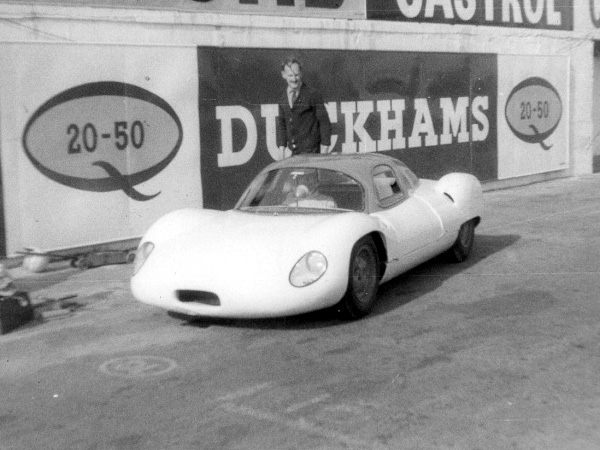
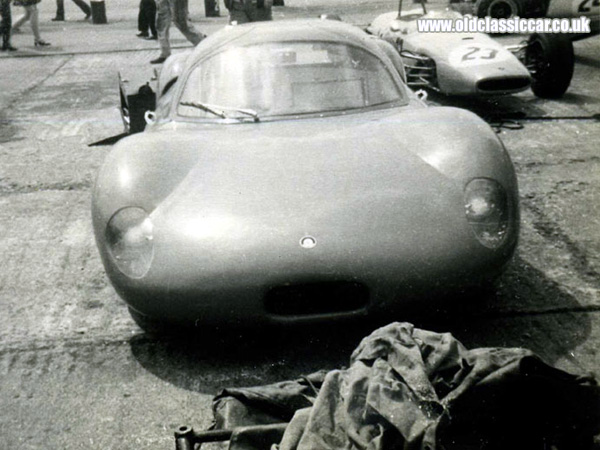
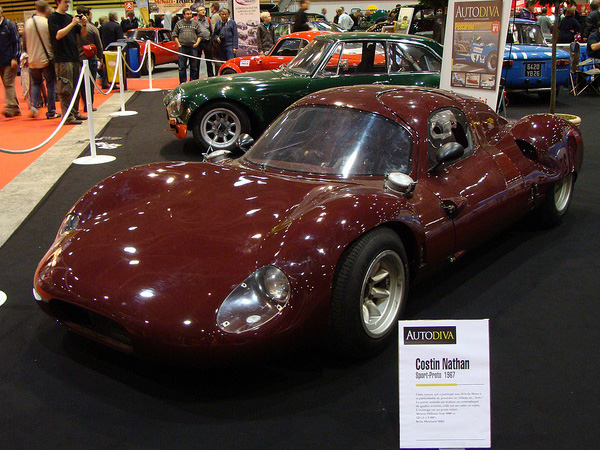
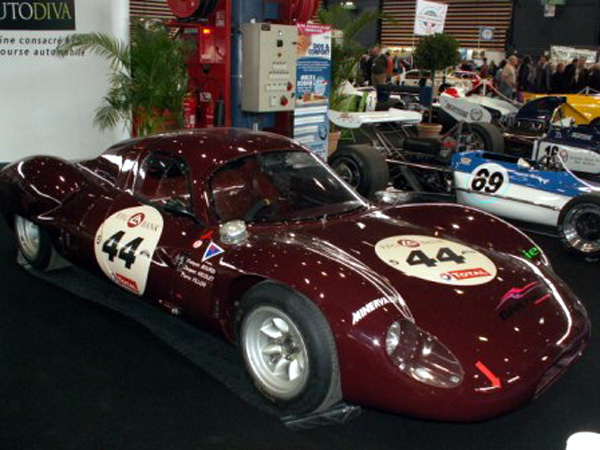
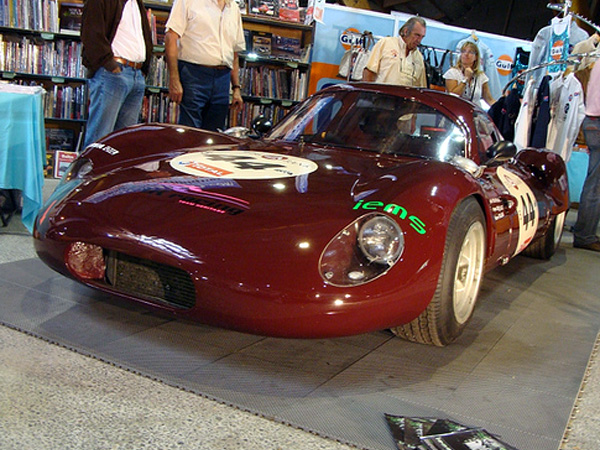
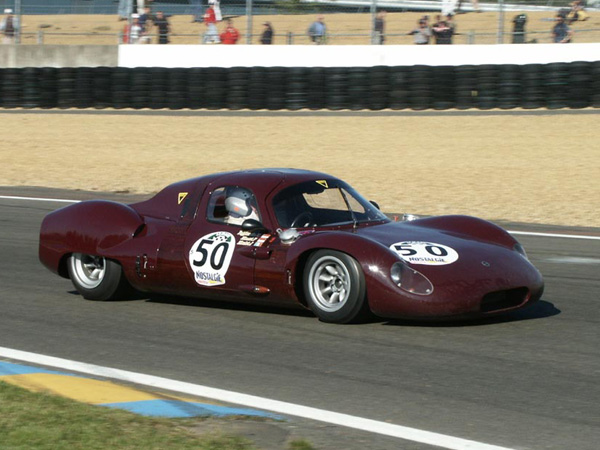
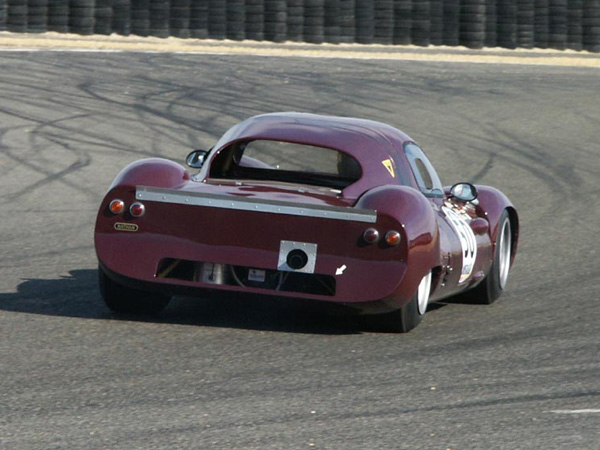
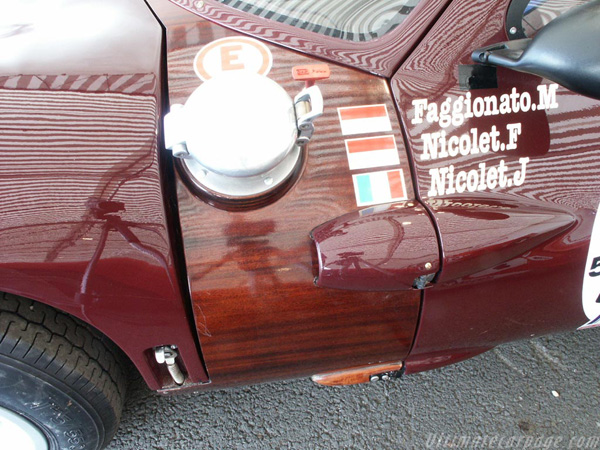
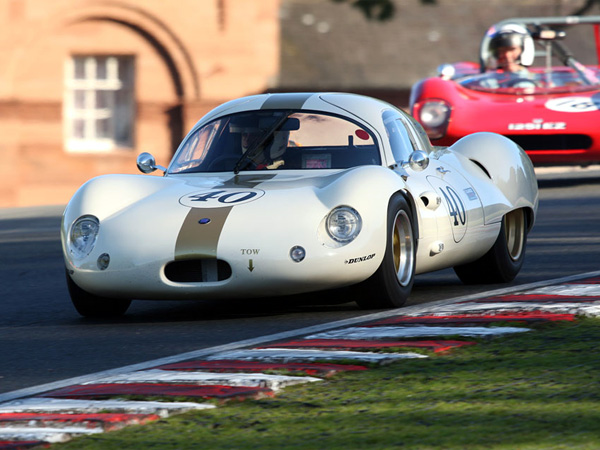
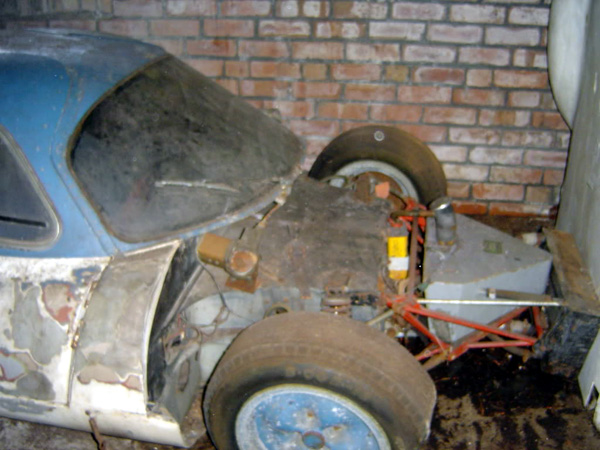
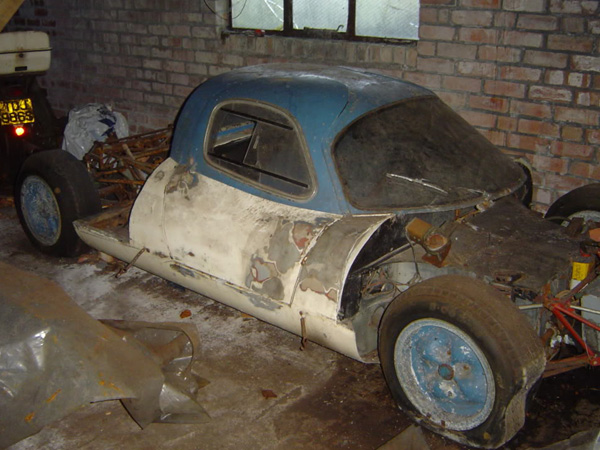
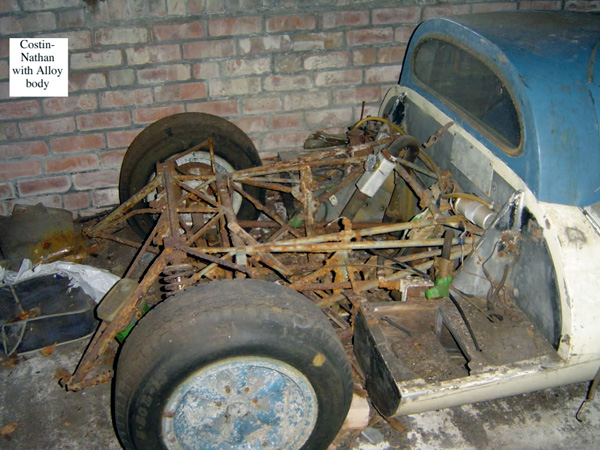
Costin Amigo
The Costin Amigo was a lightweight sports car built in the United Kingdom in the 1970s. It was designed by Frank Costin (of Marcos (automobile) fame) and built in Little Staughton, Bedfordshire.Its 2-litre engine and running gear came from the Vauxhall VX 4/90, but its plywood monocoque frame and aerodynamic fibreglass body gave it a top speed of 137 mph (220 km/h), and a quoted 0-60 time of 7.2 sec.
Only eight of the cars were ever sold.
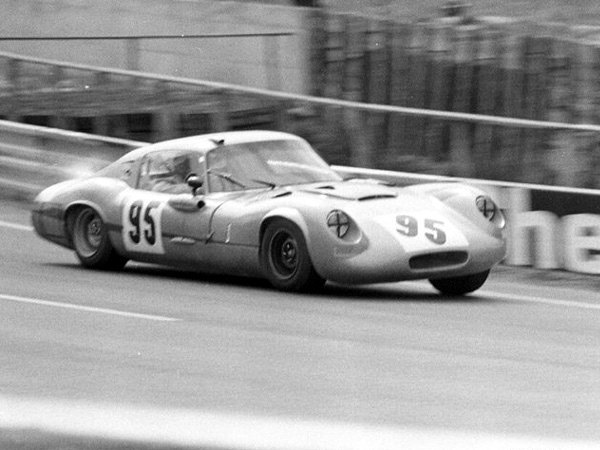
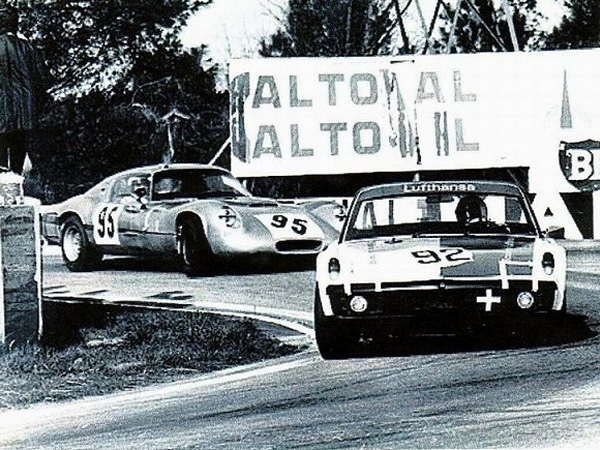
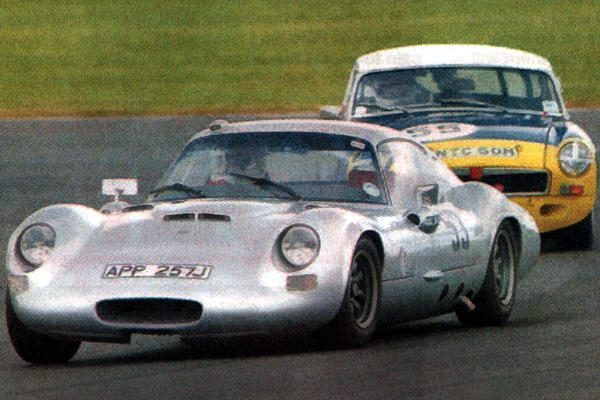
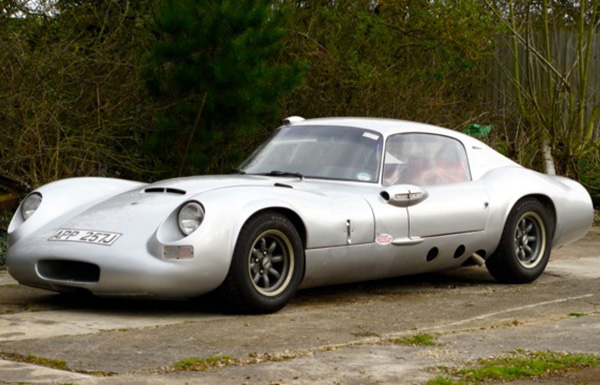
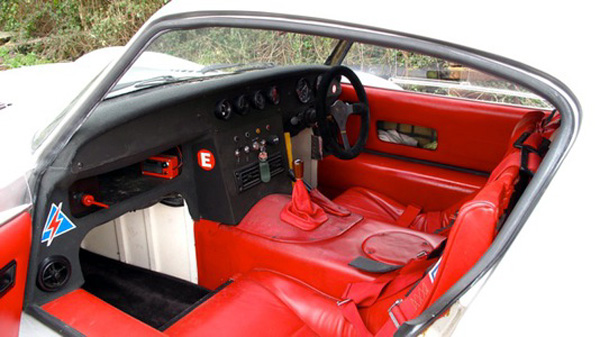
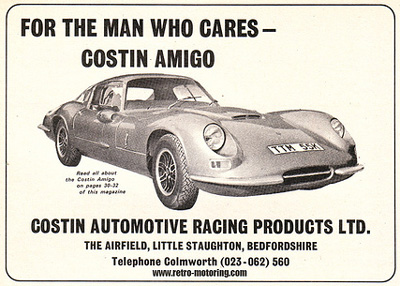
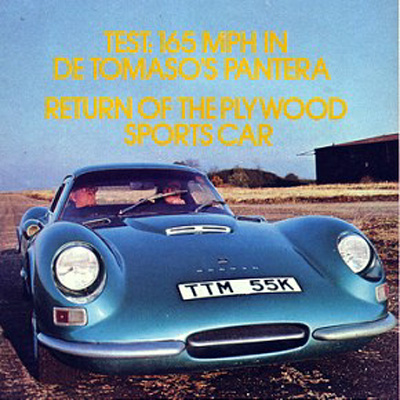
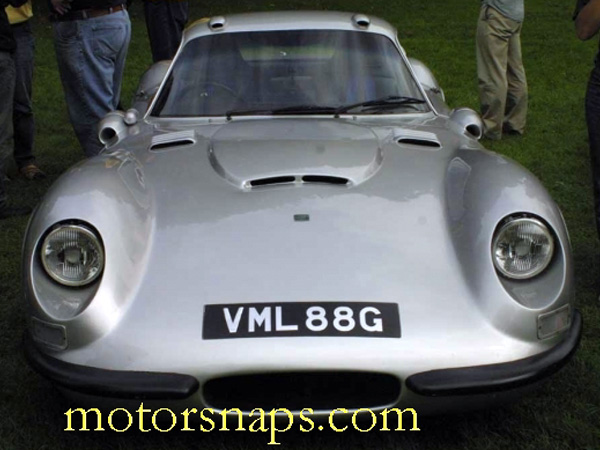
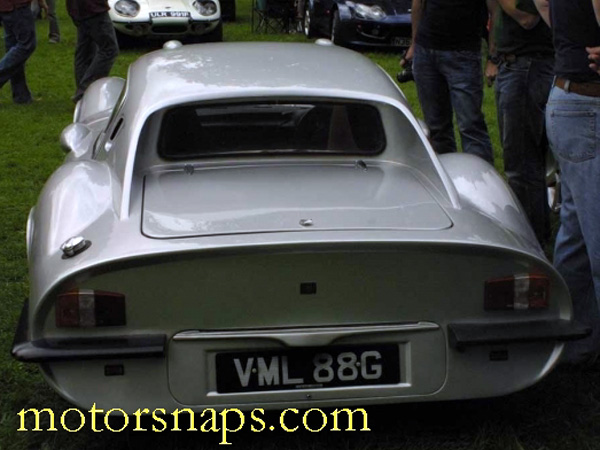
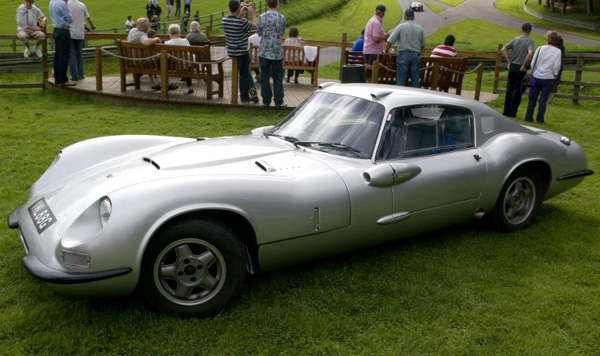
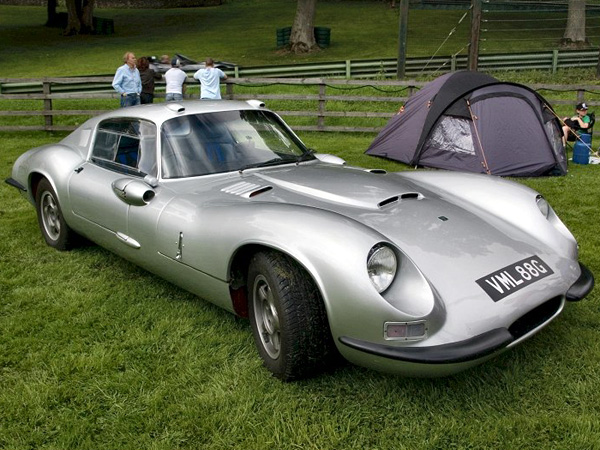
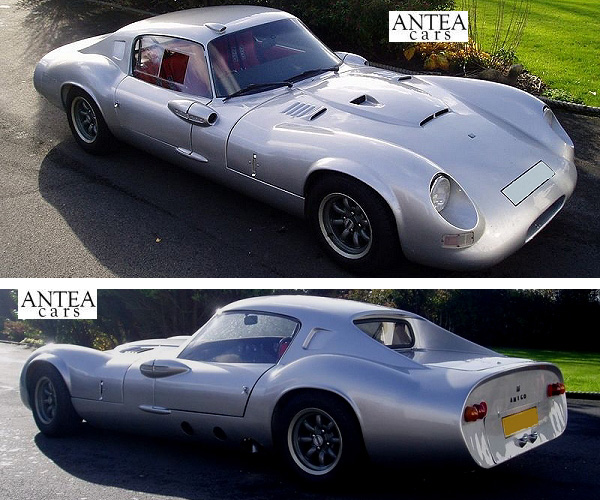
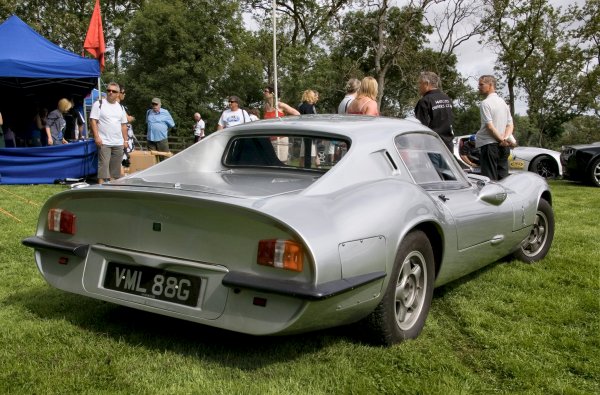
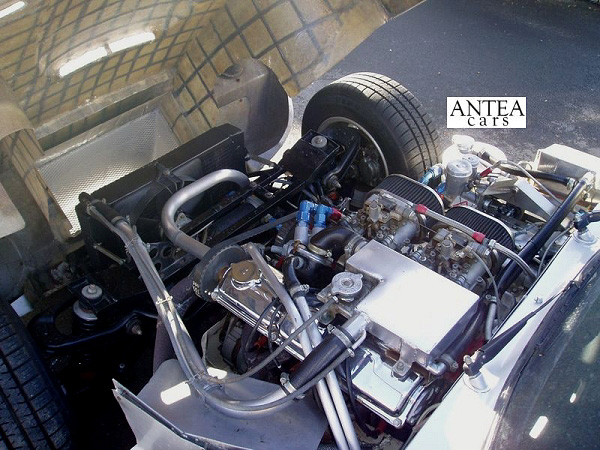
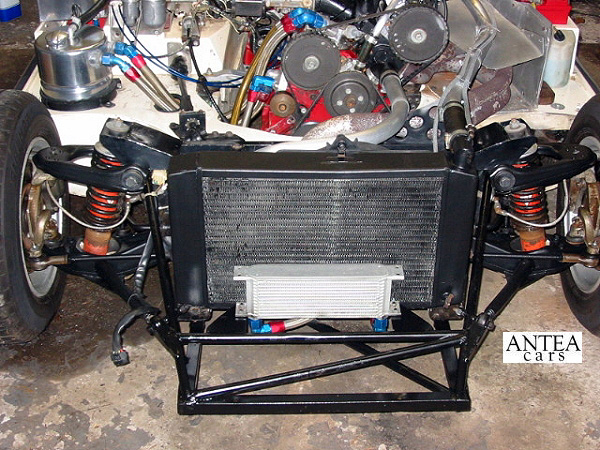
Marcos マーコス
マーコス(Marcos Cars Ltd. )は、1959年にジェム・マーシュ(Jem Marsh 、英国ナショナルフォーミュラーチャンプ)と、フランク・コスティン(Frank Costin)の2人により設立された。会社名の由来はマーシュの「Mar」とコスティンの「Cos」を合わせたもの。ジェム・マーシュが経営を、フランク・コスティンが設計を担当、レーシング・カーを設計製作するワーク・ショップとしてスタートした。
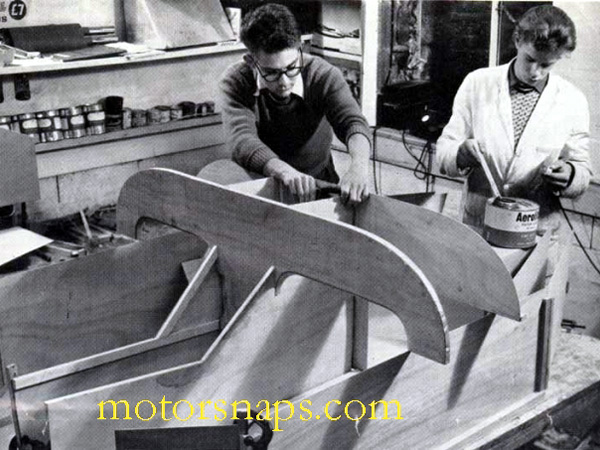
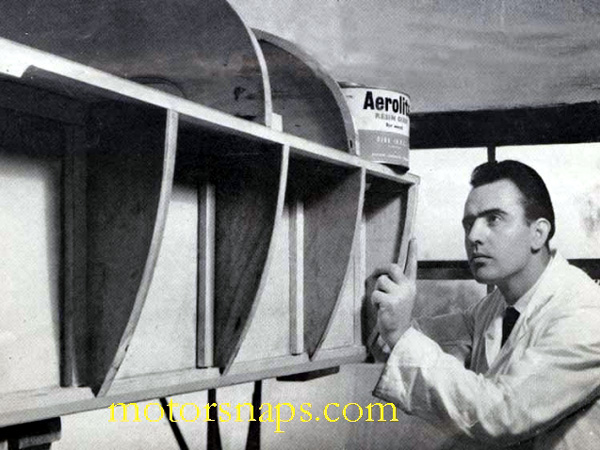
1961 Denis Adams
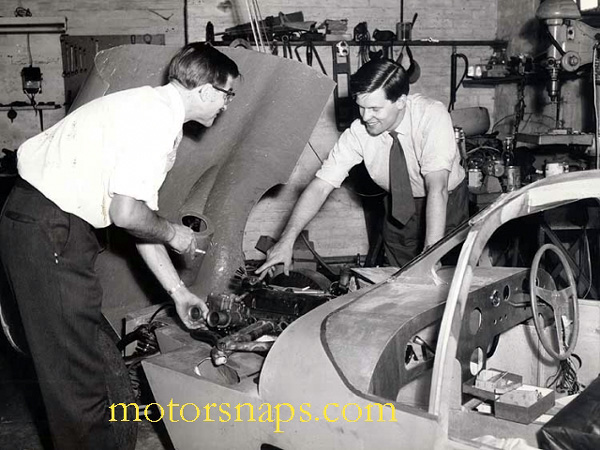
1962 John Cotton and John Sutton working on the Marcos
Wooden monocoque made of plywood
設計担当のフランク・コスティンは第二次世界大戦中に活躍した戦闘爆撃機「モスキート」の設計に従事した経験を生かし、ベニヤ合板で製作されたスポーツカー用シャーシを製作した。(画像は後年造られたレプリカ)
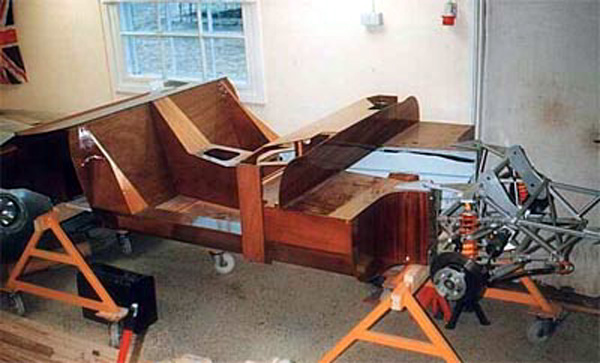
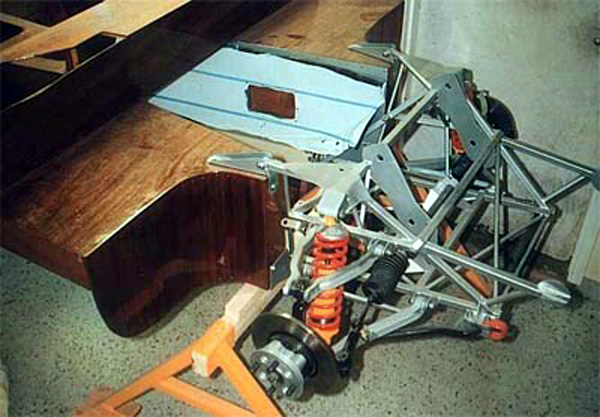
1959-1960 Marcos GT Xylon - Ugly Duckling -
最初のマーコスはフランク・コスティンによるかなり奇抜なFRPボディーを持つマーコスGT「ザイロン」(Xylon)であった。
当初のプロトタイプにはフォード・モーター製1.2リッター(1172cc)エンジンが積まれていたが、ザイロンにコスワースチューンのフォード・モーター製1リッター(993cc)エンジンに積み換えられた。
非力なエンジンながらもベニヤ合板による軽量かつ剛性の高いシャシーはレースにおいて好成績を収める要因となったが、空力に優れながらも奇抜なボディー・デザインであることから「醜いアヒル」(Ugly Duckling )というニック・ネームが付けられる。生産台数は6台とされている。
The word Xylon comes from the Greek for wood. Manufactured from 1959 to 1960 this was the first of the Marcos models. Powered by the Ford 105E engine, the cars were originally built in Dolgellau in Wales, and then later in Luton. Of the 9 cars built, most were competition cars, and were driven with great success by the likes of Sir Jackie Stewart and Jackie Oliver.
Designed by Frank Costin, famous for the Vanwalls and numerous Lotus sports racing cars, the Xylon was (and still is) better known as the 'Ugly Duckling', due to its uncompromising appearance.
Built purely as a race car to compete in 750 Motor Club events, the car was unusual for its wooden chassis, but this gave it a very light weight and in the hands of Jackie Stewart, Jem Marsh and many others, it achieved outstanding success.
The car was powered by a Ford 105E engine and it's high roof was dictated by Jem's considerable height (something which makes all Marcos cars a good choice for taller drivers, to this day). The original car was built in Dolgellau, Wales by Frank Costin and Dennis and Peter Adams, but it was later built in a small production run in Luton.
Jem Marsh raced the ex-Stewart car for many years in FIA and HSCC races and was always a contender for, at least, class victories.
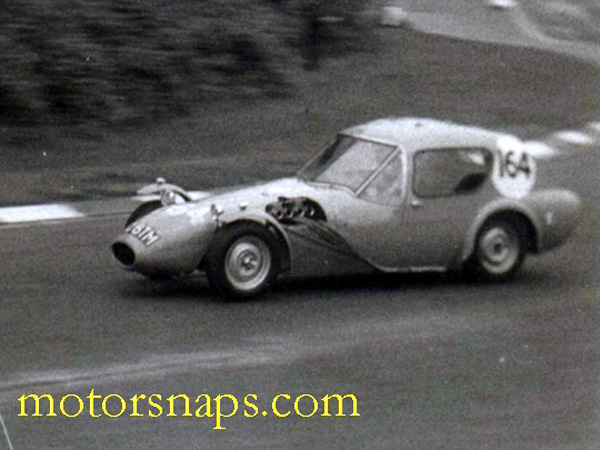
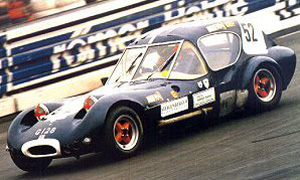
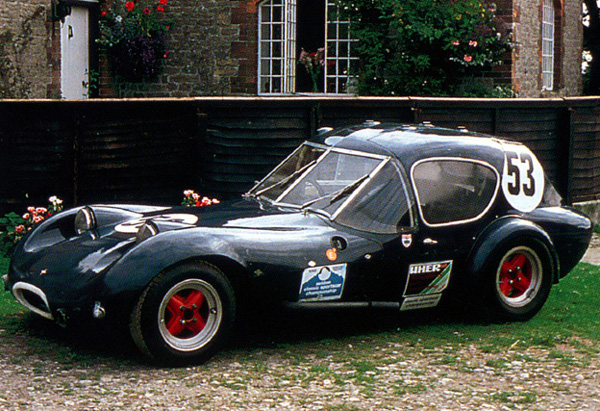
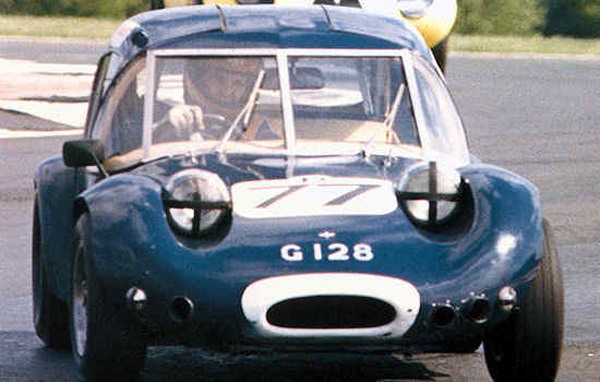
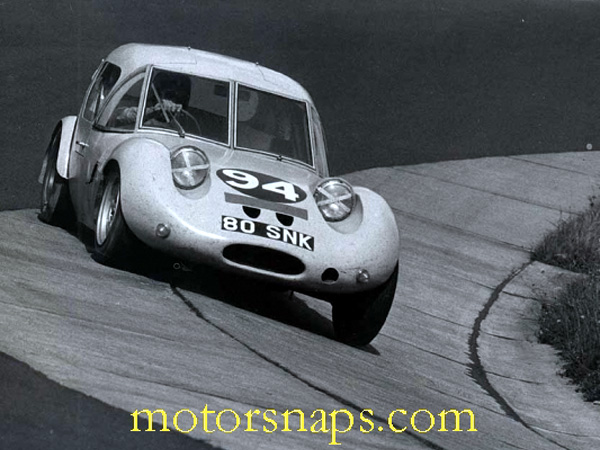
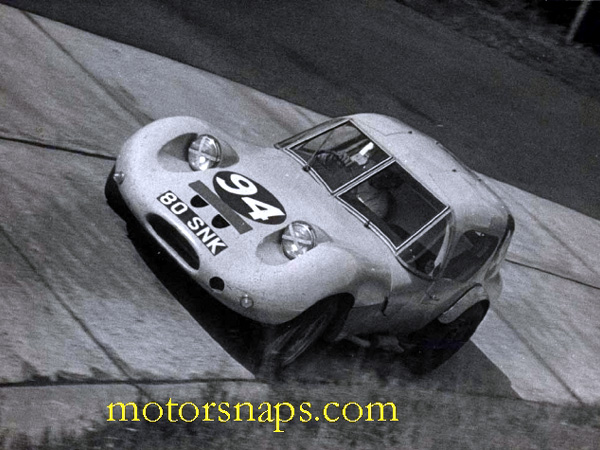
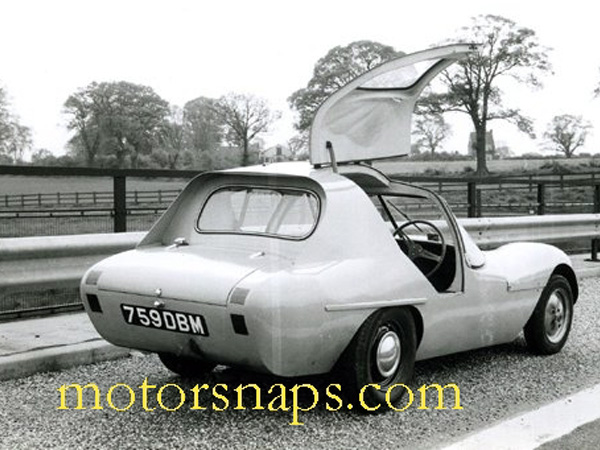
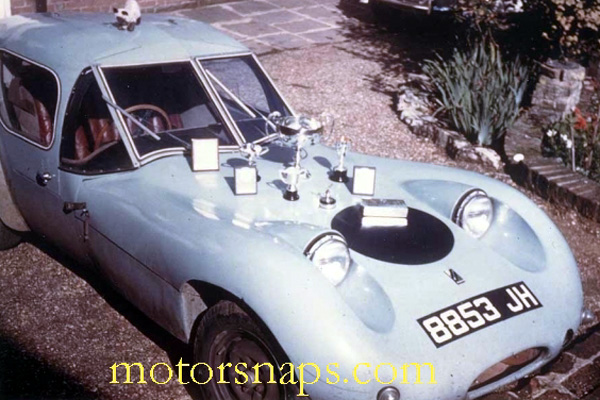

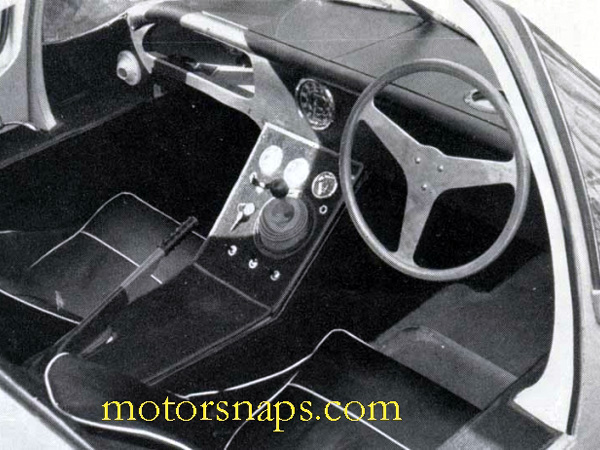

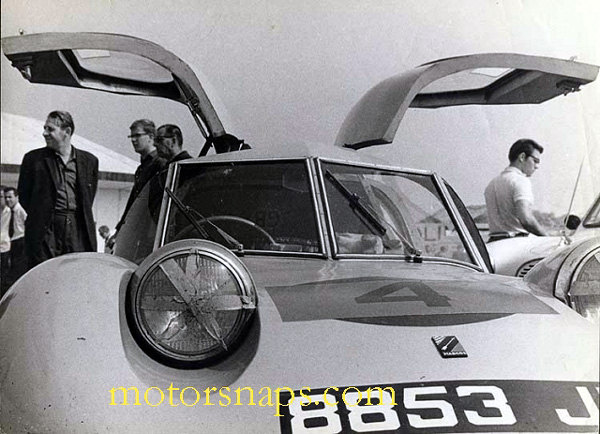
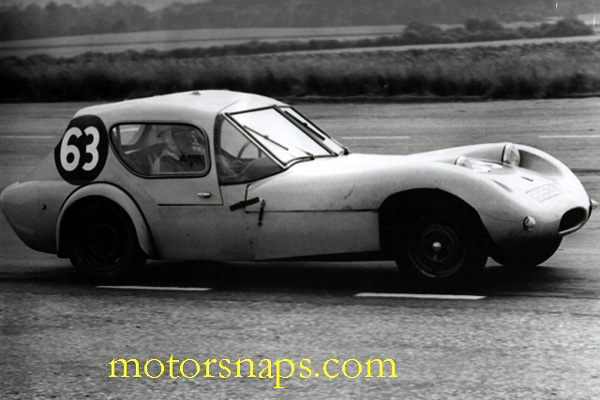
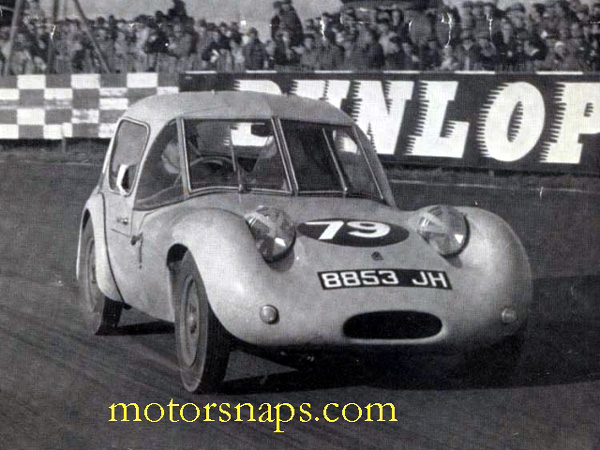
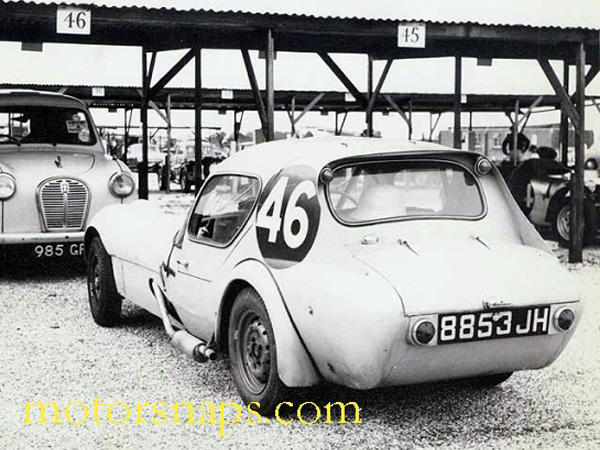
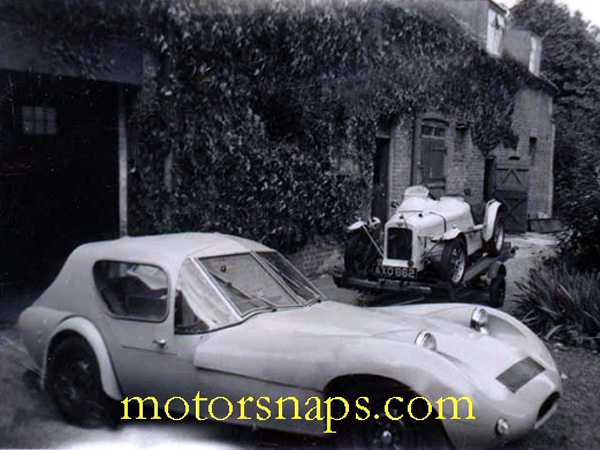
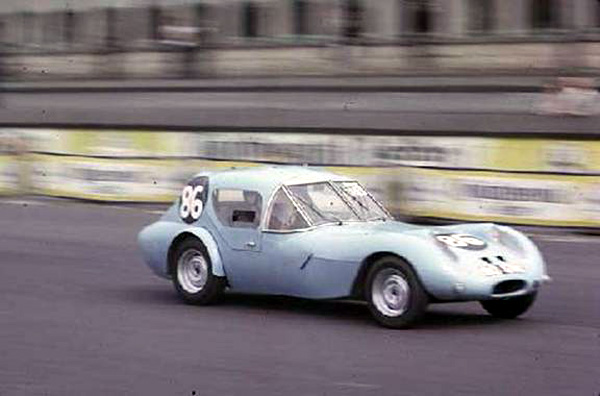
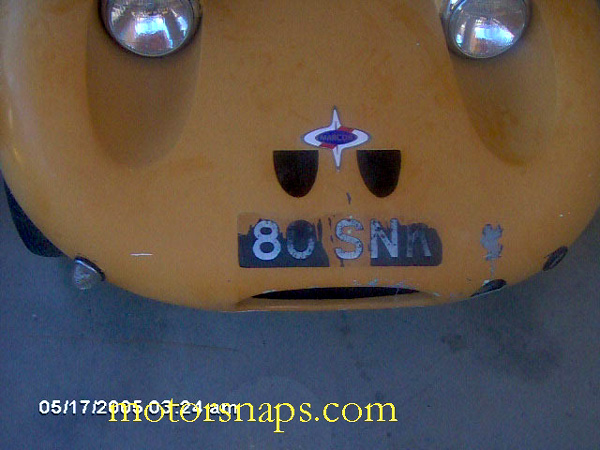
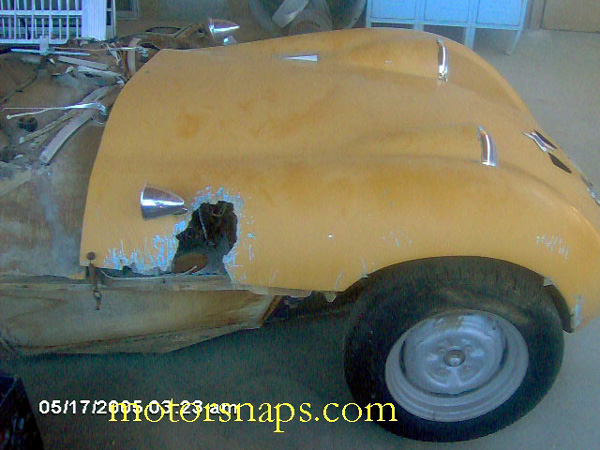
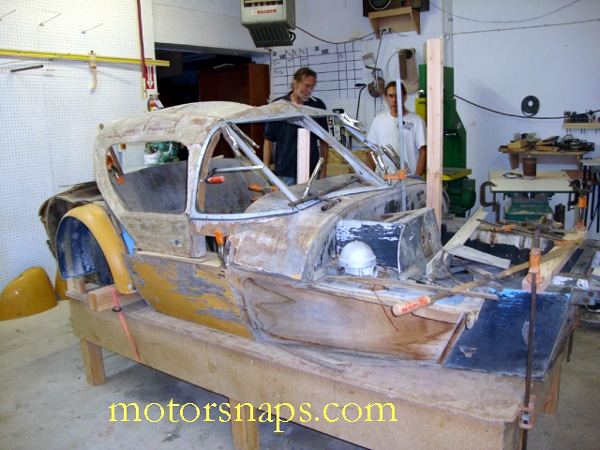
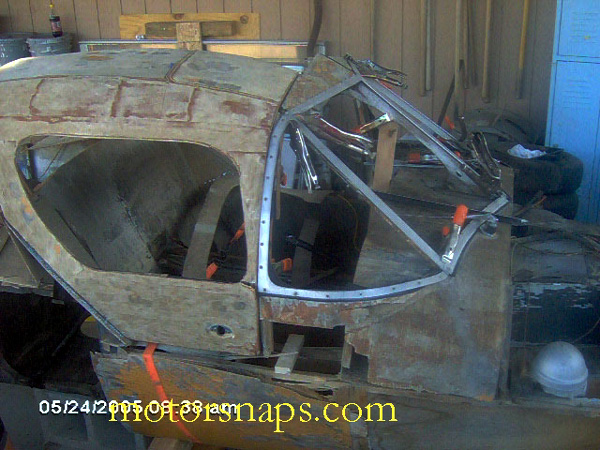
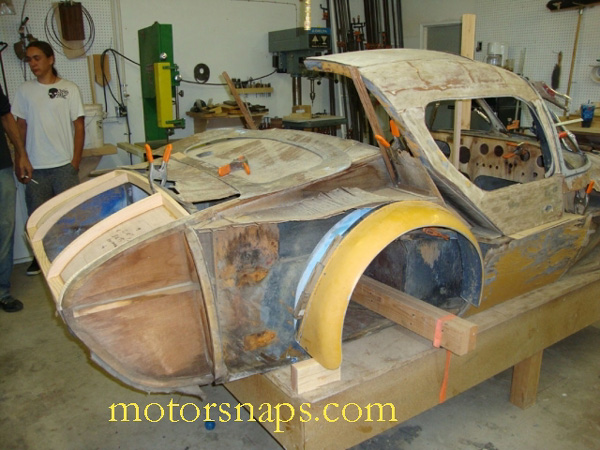
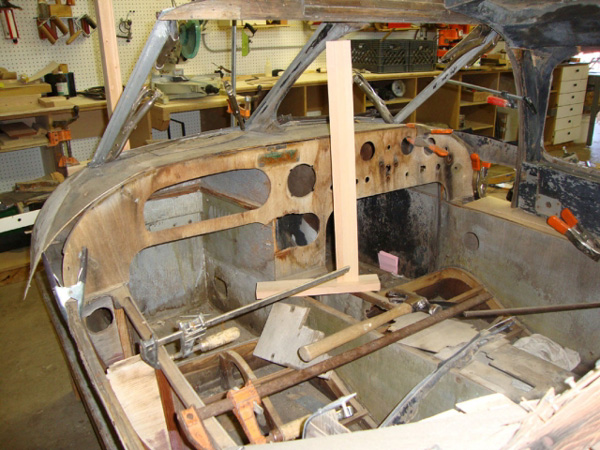
1961 The Luton Gullwing
1961年、デニス・アダムス(Dennis Adams )、ピーター・アダムス(Peter Adams )兄弟がマーコスに加入、ザイロンの手直しに取り掛かり、ガルウィングドアを与えられた「ルートン・ガルウィング」(Luton Gullwing )と「ブレッドバン」(Breadvan )が製造されたが、この頃フランク・コスティンはマーコスを去った。
The Luton Gullwing, introduced in 1961, was based on the Xylon. the car was sold in both race and road form, and with the use of more fibreglass in the construction, a more streamlined shape was obtained. Utilising the same running gear as the Xylon, 13 cars were produced in Luton.
The Adams brothers and Jem Marsh realised that to make a good living out of building Marcos cars would require something with a wider appeal than the Xylon, successful though it was as a race car.
The first step was to redesign the bodywork of the Xylon to be a little sleeker and this car was known as the Luton Gullwing (because, by now the cars were being built in Luton).
This car still sold mainly to racers, although a few were sold as road cars. Once again it featured gullwing doors, but was a much more attractive car than the original 'Ugly Duckling'.
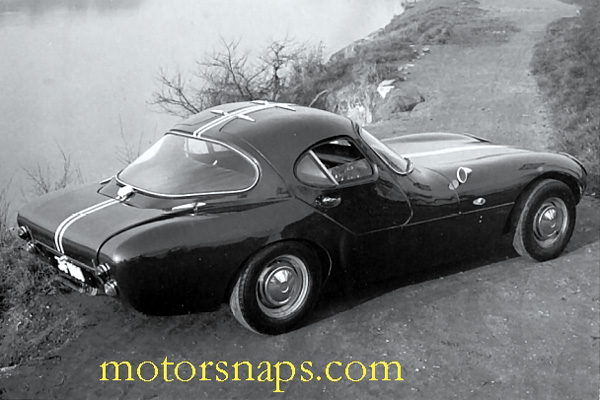
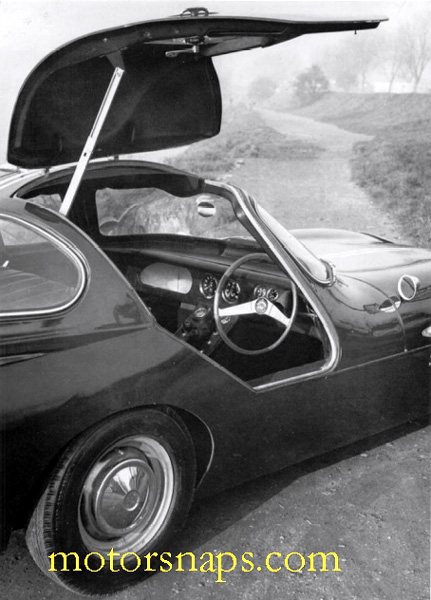
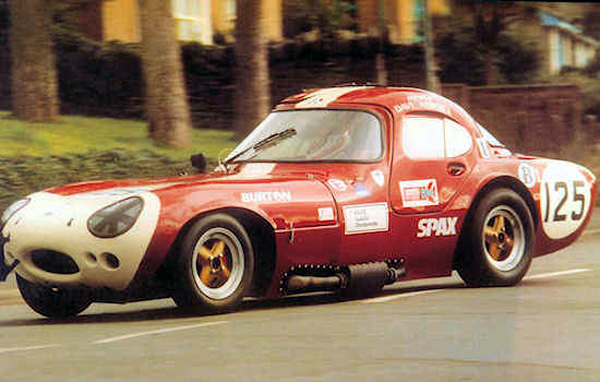
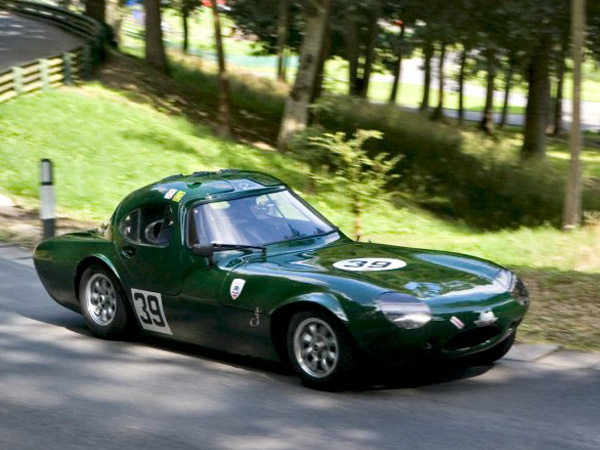
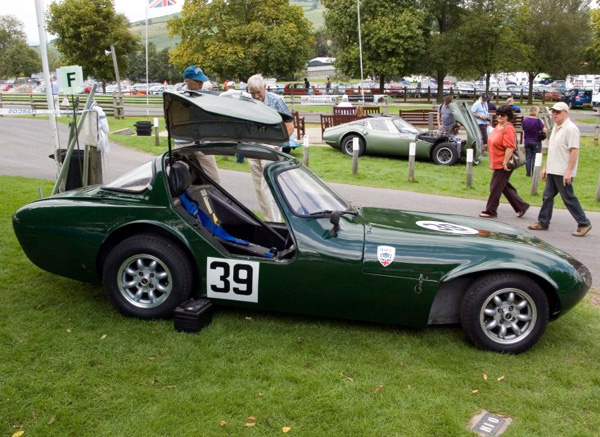
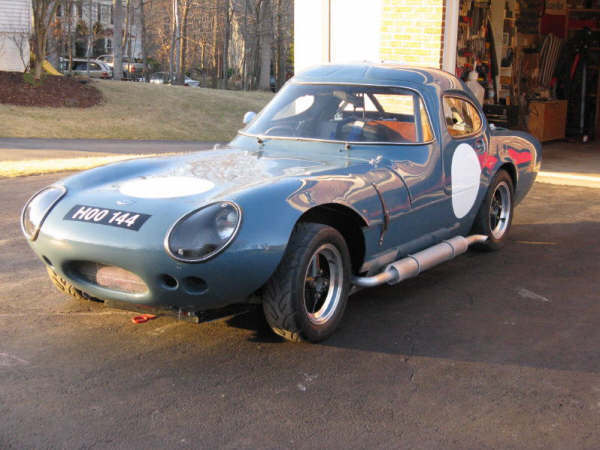
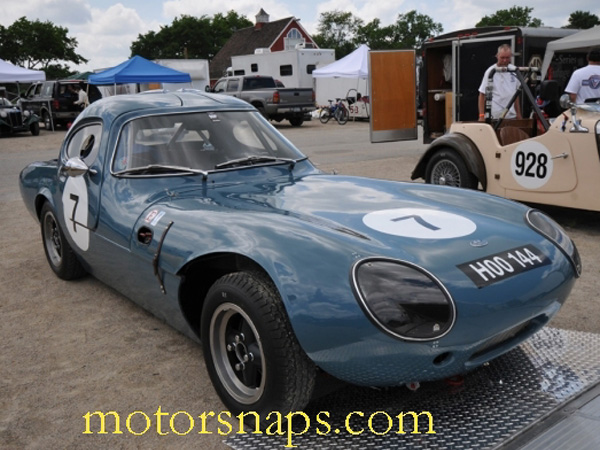
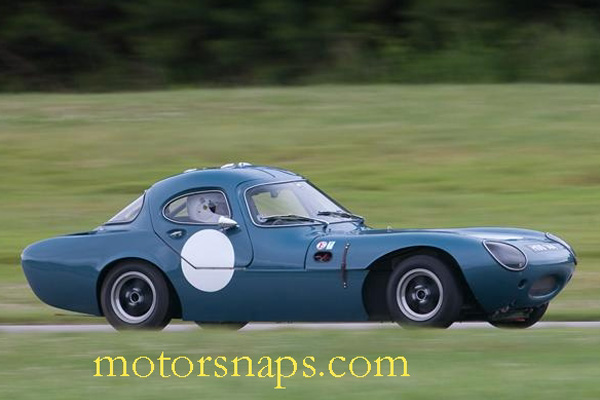
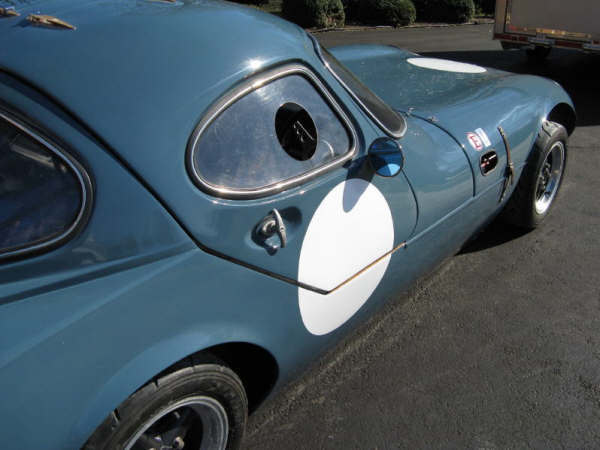
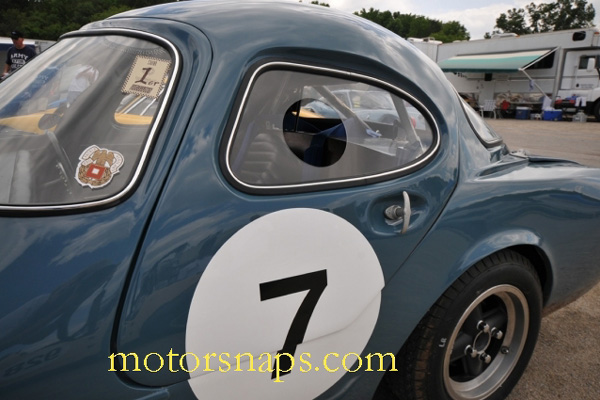
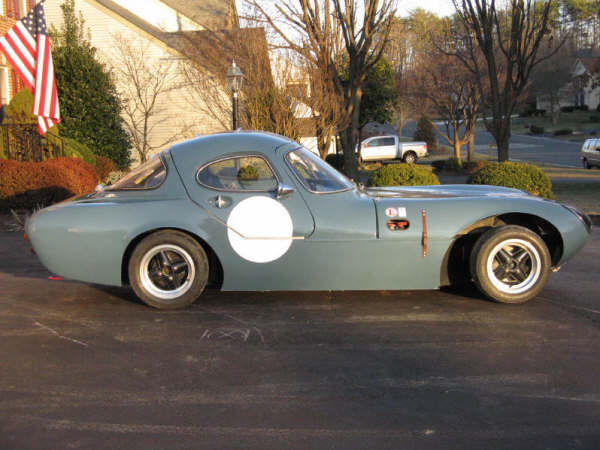
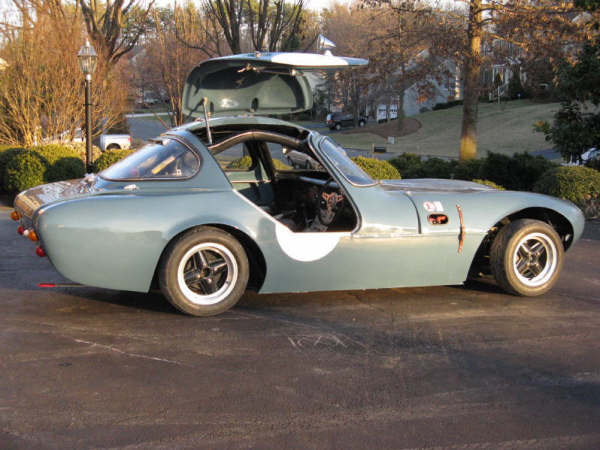
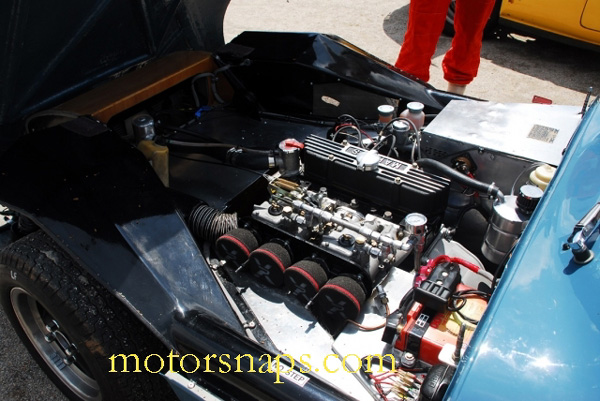
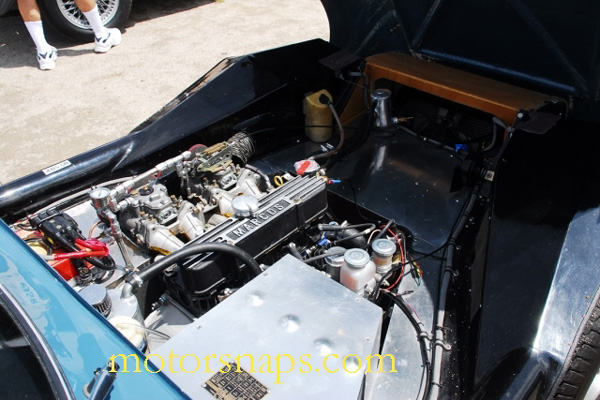
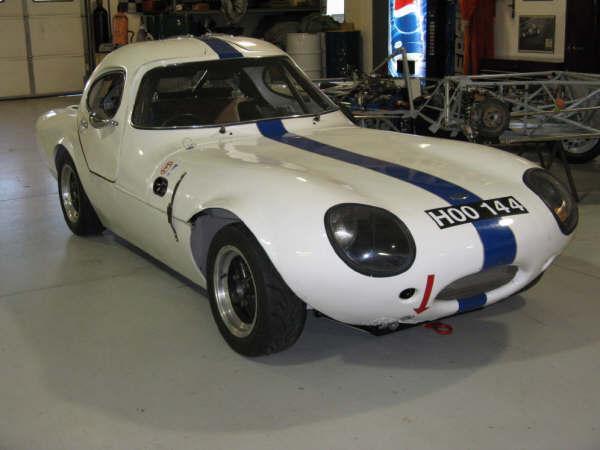
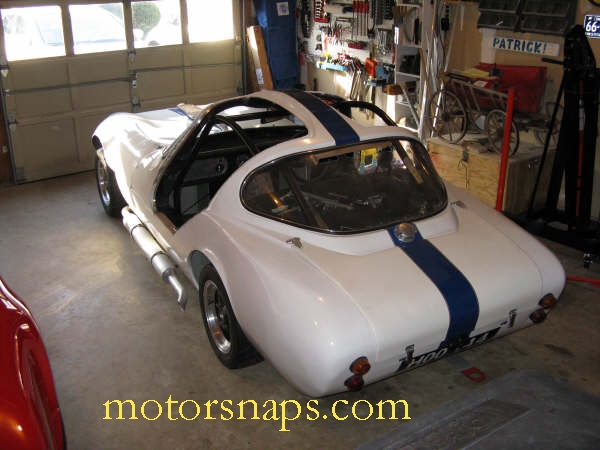
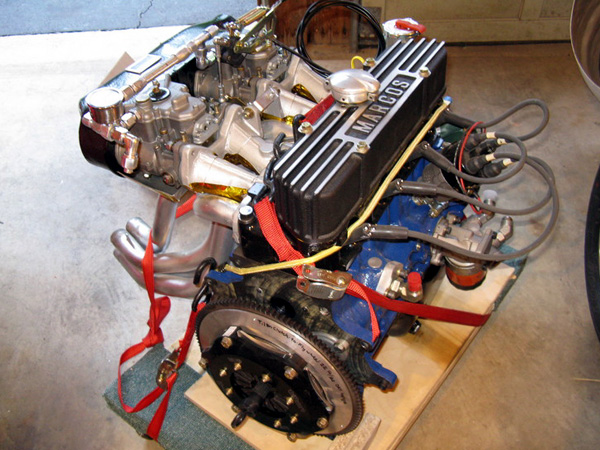
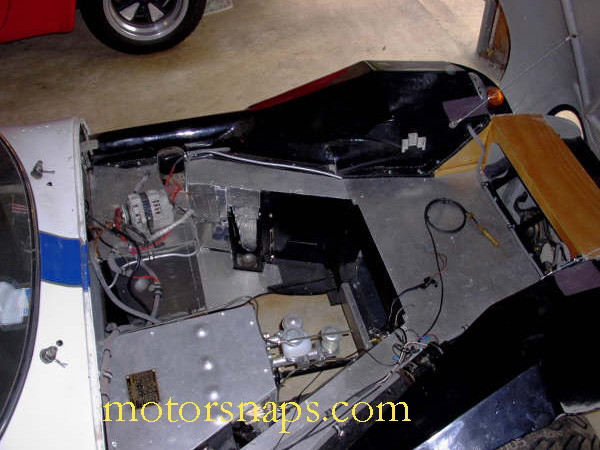
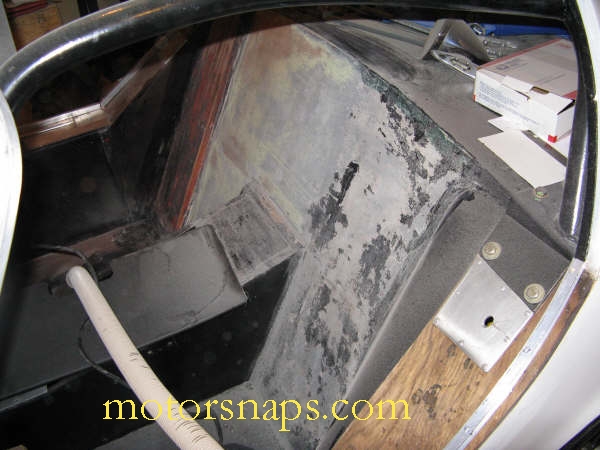
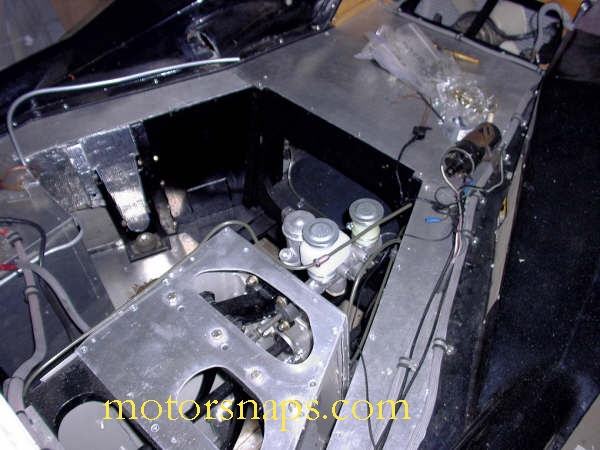
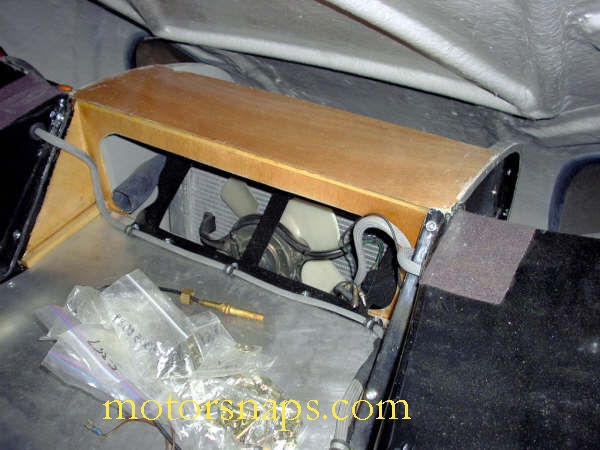
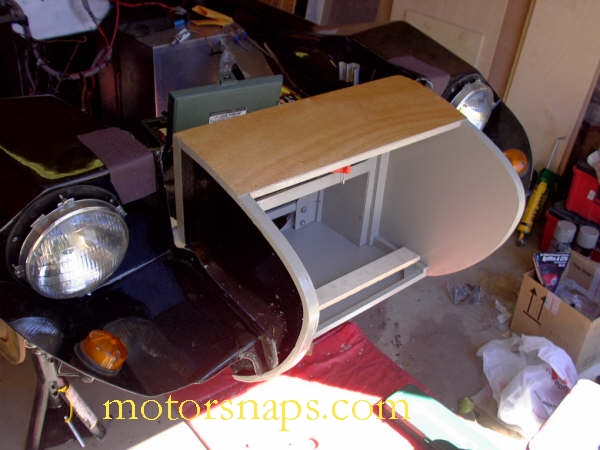
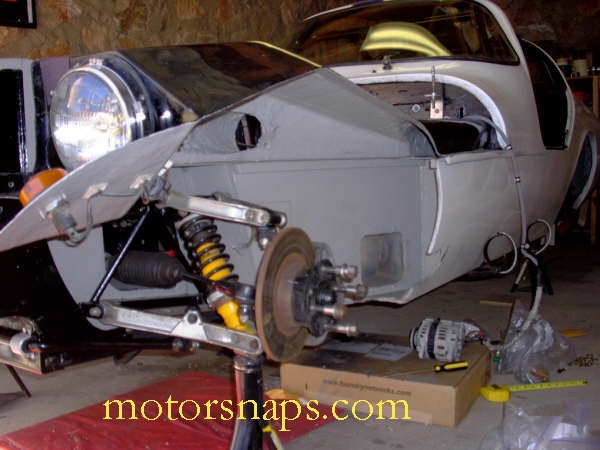
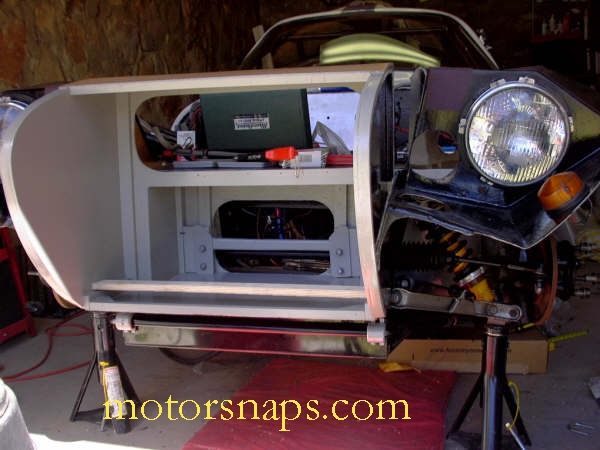
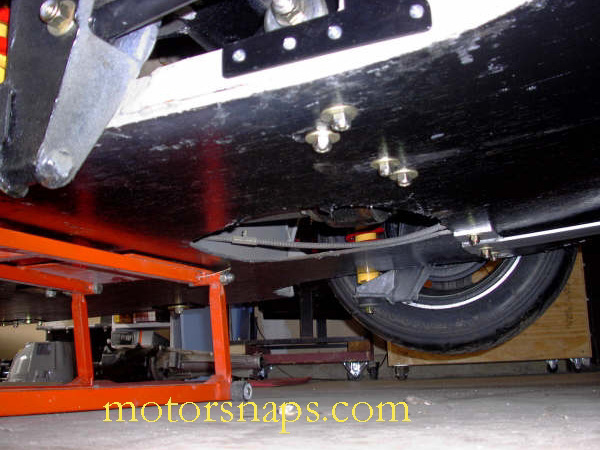
1963 The Spyder & Fastback(Breadvan)
The final model prior to the introduction of the classic Marcos two seater was the Fastback, introduced in 1963. 18 cars were produced, including the first ever Marcos Spyder, at Greenland Mills, Bradford on Avon, now to be the home of Marcos for the next 7 years.
The next step was to design a new car around the existing wooden chassis and this was to be a convertible or Spyder in Marcos speak. However, the demand from racers for a roof, caused Dennis Adams to hurriedly design a roof for the car, which is not a million miles away from the design now so familiar to Marcos afficenados. This model is known as the 'Breadvan' because of it's slightly boxy roof and boot line.
The downside of fitting this roof was that (due to the use of the gullwing chassis, but not gullwing doors) the doors were tiny and climbing in and out was extremely difficult.
A number of these cars were sold, mainly in coupe form, but it was only a matter of time before a new car, designed primarily as a road-going GT took over from the somewhat impractical design.
It almost goes without saying that all these models were successful racers and, like other models, race to this day in both national and international classic car series throughout the world.
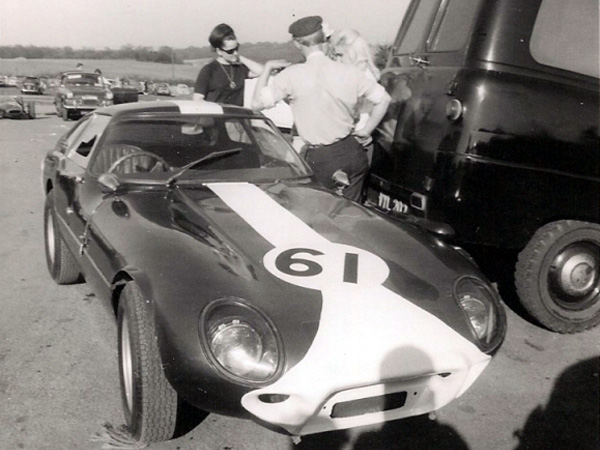
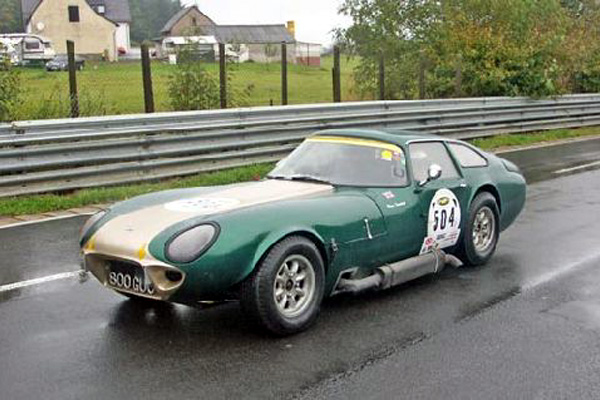
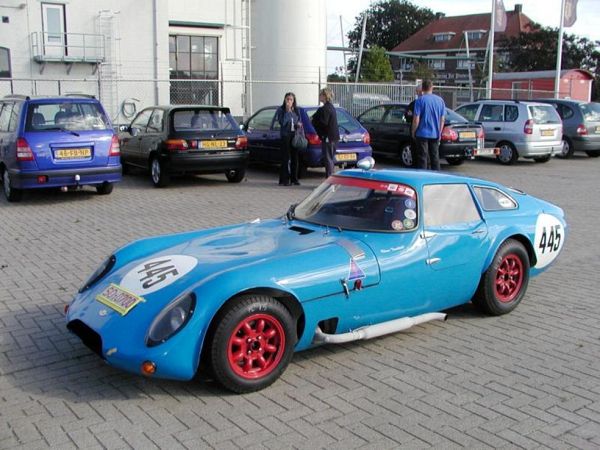
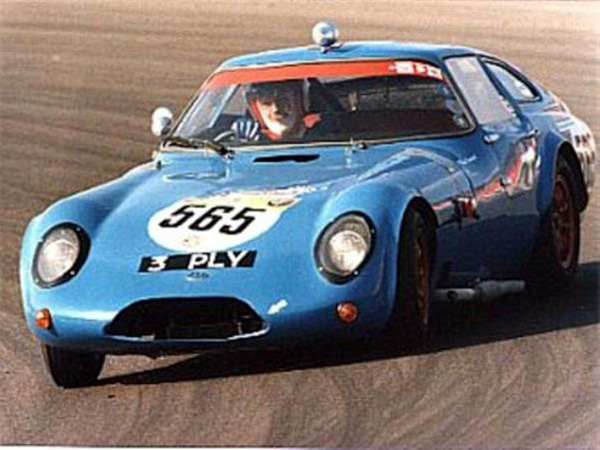
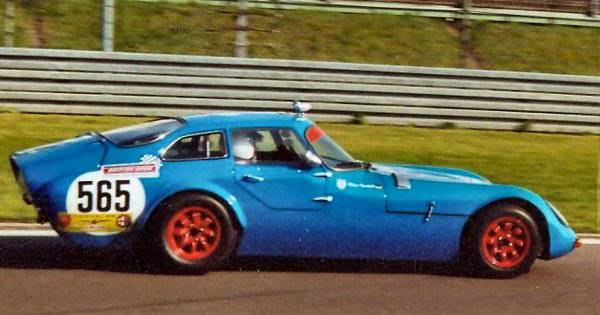
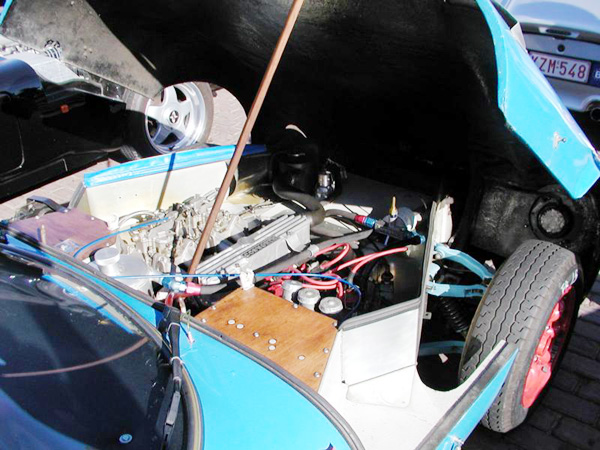
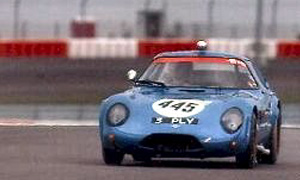
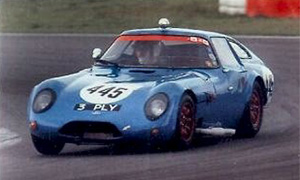
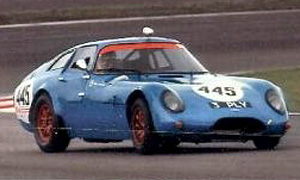
The Adams GT 1963 - 1969
Unveiled at the 1963 Earls Court racing car show, the GT (all Marcos cars prior to the Mantis were known purely as the GT, although some picked up nicknames along the way), was a sensation. At 43 inches at the roof, this was one of the lowest cars ever produced and its long bonnet and Kamm tail, although reminiscent of the E-Type and even the Ferrari GTO, were remarkable for their time, especially for a small manufacturer like Marcos (Compare the lines with the Austin Cambridge or Vauxhall Victor of similar vintage!).
Originally, the, once more, wooden chassised car was equipped with a Volvo engine from the P1800 and had a complex De Dion rear suspension and heavily sculpted dashboard. However, high cost and limited sales of early cars, soon saw a movement to a Ford powerplant, a simpler dashboard and a live rear axle, held in place with a panhard rod.
One feature which appeared on this model and has been retained to this day is the adjustable pedals. Rather than have a seat which moves back and forth on runners, the Marcos has a fixed cushion for squab and seat back and the pedals move in relation to the driver. The position of the pedals is easily adjusted by a wheel on the dashboard (or on recent cars, electric motors). This feature is almost unique, but makes the Marcos a supremely comfortable car in which to travel and allows a laid back driving position, virtually unknown outside the world of single seater racing cars.
Early sales of the GT, which had been designed as a road car, were to racers and once again the car proved its worth on the track. To this day the 1800 and Marcos is a competitive car against both class and bigger engined competition in both FIA and HSCC championships, especially in the hands of people like Roger Ealand, Per Hagermark in Sweden (his car pictured above) and Dave Methley.
The Ford 1500 engine was supplemented, in time, by a Lawerencetune modified version enlarged to 1650cc, the ford 1600 x-flow and eventually, shortly after a failed attempt to qualify a 1600cc car at Le Mans, the Ford V6 Essex engine.
1964年、「マーコス1800GT」を発表する。シャシーこそフランク・コスティン設計のウッデン・フレームを改良したものだったが、インボード・ブレーキや新設計のサスペンションを装備。そして悪評だったFRPボディーは、アダムス兄弟がデザインし「醜いアヒルから生まれた白鳥」とジャーナリストから称賛を浴びた。エンジンはボルボ製1.8リッター(1780cc)。このエンジン最高出力は114psで、マーコスGTのフォード製エンジンの最高出力60psから一気にパワフルなものへと変わったが、完全なロード・カーとして装備を充実させたため車重も増加し、性能面ではマーコスGTと特に変わりはなかった。
1966年、エンジンをフォード製、ロータスコーティナ用の1.5リッターへ変更。サスペンション等も安価なパーツに交換されたため、性能は低下した。この「マーコス1500GT」の生産台数は82台とされる。
1967年、「マーコス1500GT」のスペシャル・モデル、「マーコス1650GT」も30台程度製造された。クリス・ローレンスによる排気量1650ccエンジンは、ボアアップ、ハイコンプレッション、2基のウェーバー・キャブレター(1500は1基)を持ち、最高出力140psを叩き出した。
1967年、1.5リッターエンジンは、フォード製1.6リッター(1599cc)OHVエンジンに変更され「マーコス1600GT」となる。
1969年、ディアック用3リッターV6(2994cc)エンジンを搭載し、4輪ディスク・ブレーキに変更された豪華版「マーコス3リッターGT」も生産された。このモデルの最高時速は201km/h、0-60mphは7秒であった。
1969年秋、製造コストの面から「ウッデン・フレーム」が見直され、ボックス断面の鋼管スペース・フレームに変更された。
1964-1966 1800GT
Unveiled at the 1964 Earls Court Racing Car Show, the 1800 Volvo powered Marcos GT stole the show. This was a totally new car and a shape way ahead of its time, designed by the Adam's brothers. Produced from 1964 to 1966, there were approximately 100 cars built at Greenland Mills, Bradford On Avon.
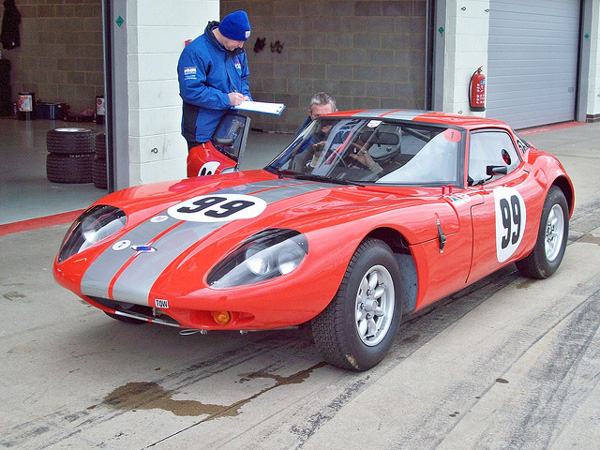
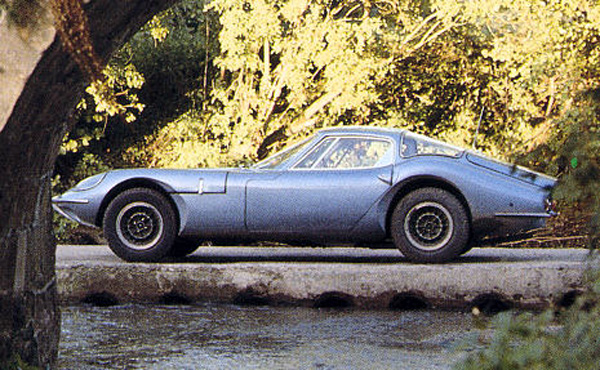
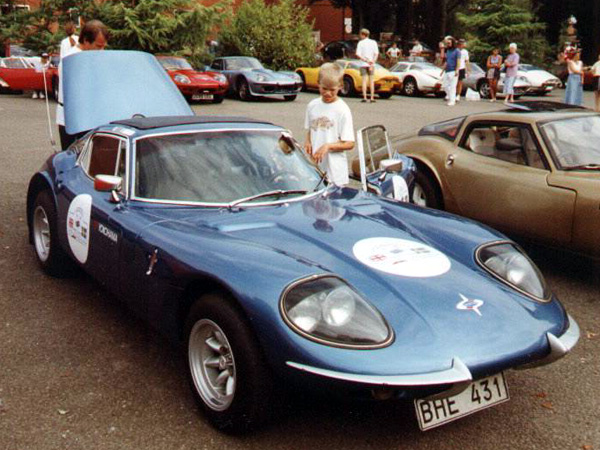
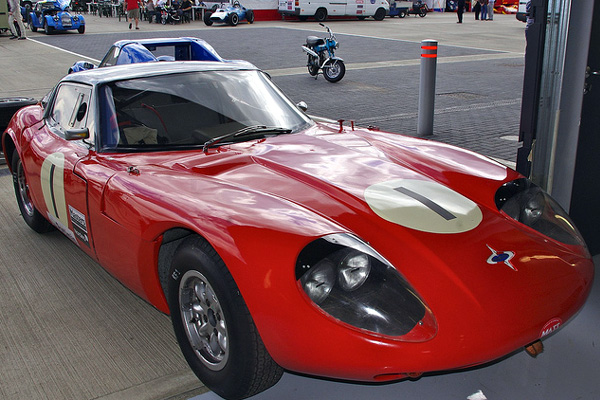
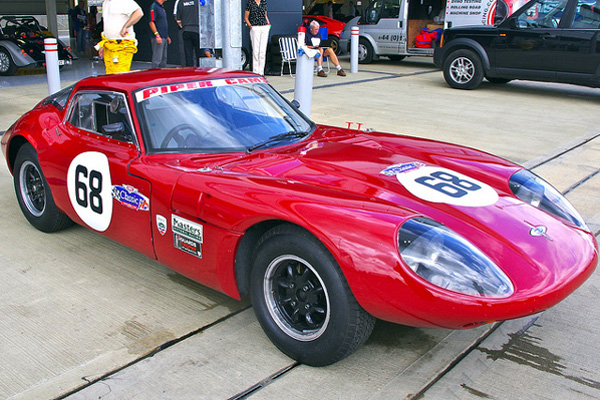
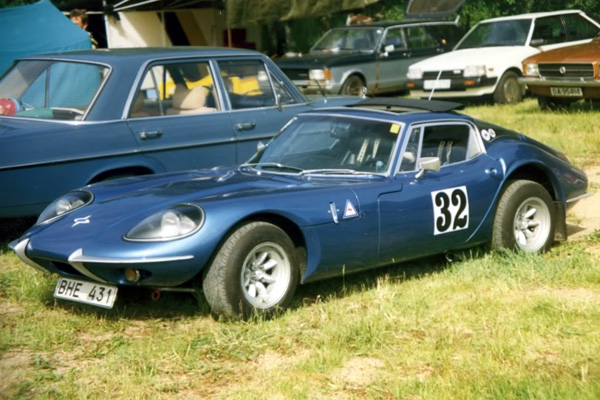
1966-1967 1500GT
After the 1800 came the 1500, a wooden chassis car using the Ford 1500 GT pre crossflow engine. Under 100 cars were produced at Greenland Mills between 1966 and 1967.
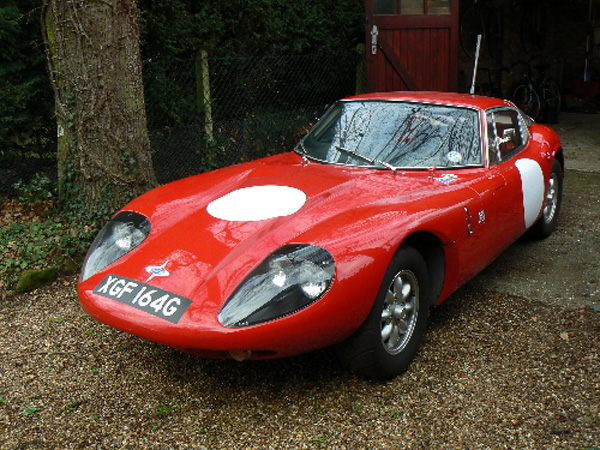
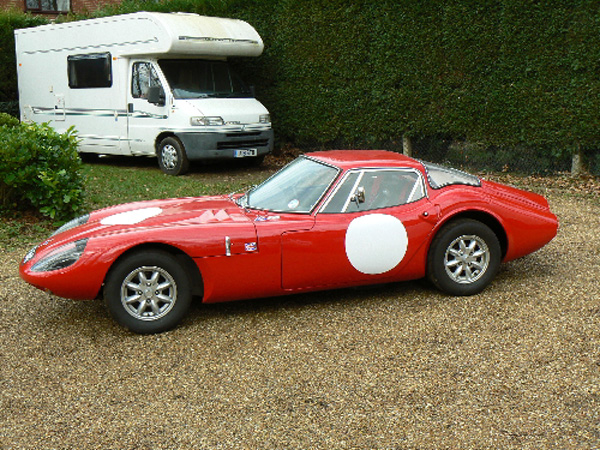
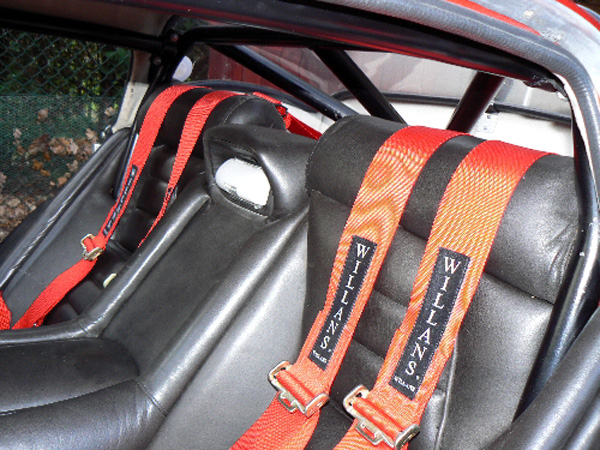
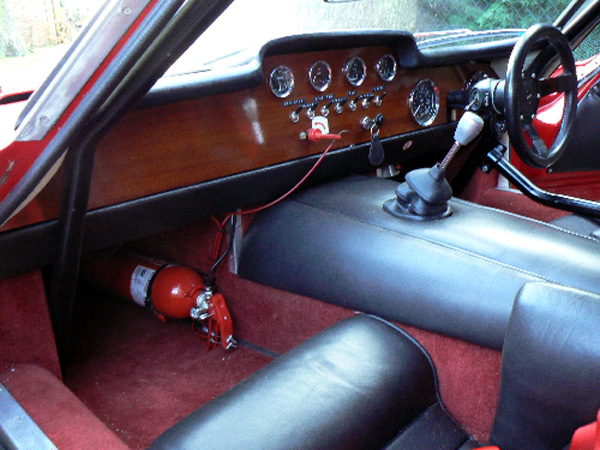
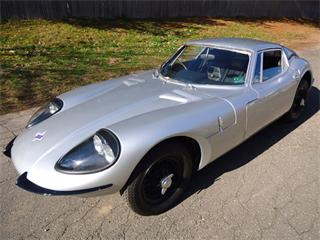
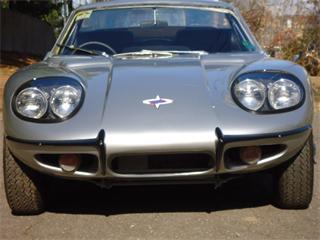
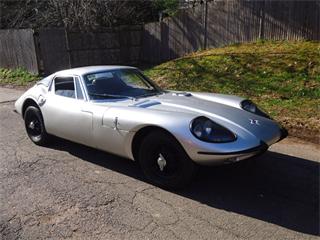
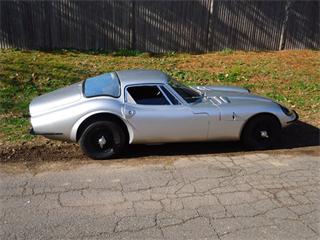
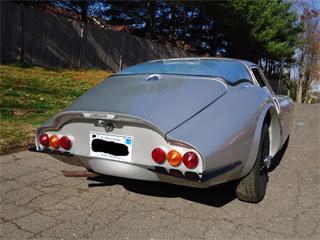
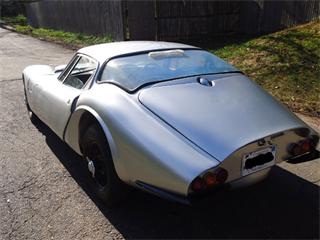
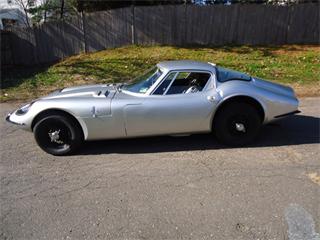
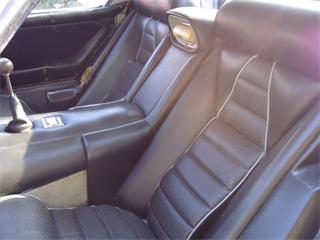
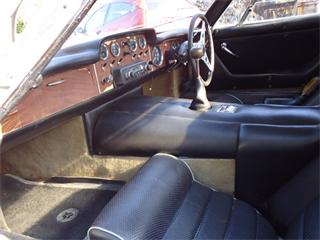
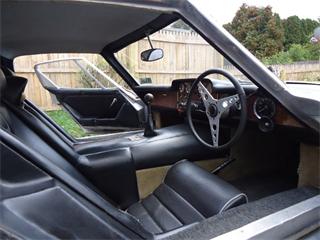
1967 1650GT
Based on the 1500, with the same wooden chassis, the 1650 was launched. It was fitted with the Chris Laurence 1650 engine, and around 30 cars were produced in 1967.
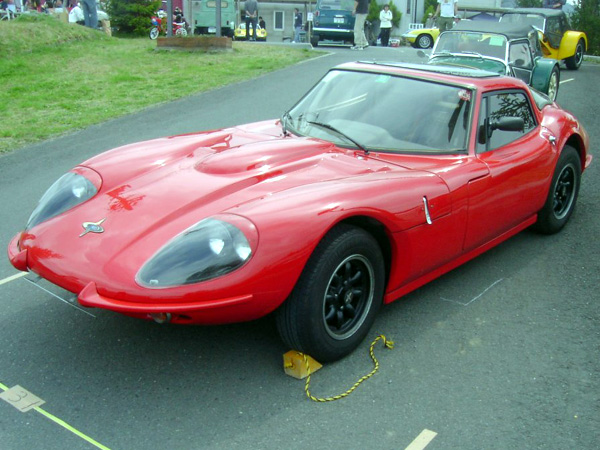
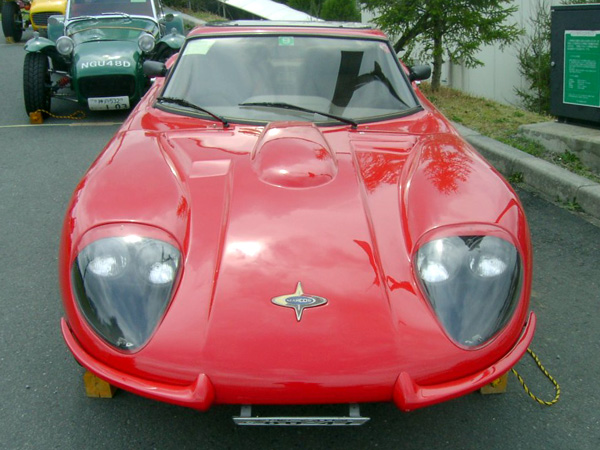
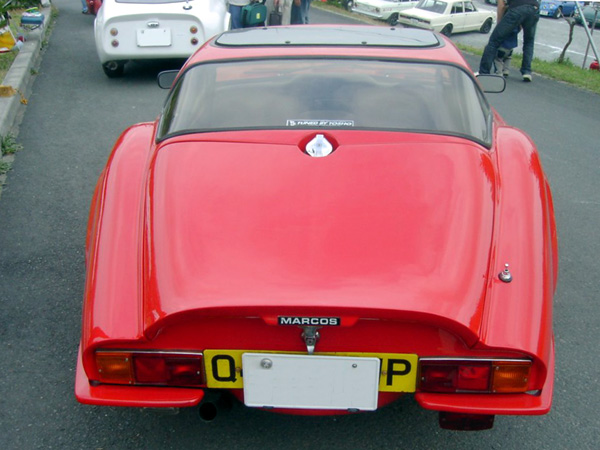
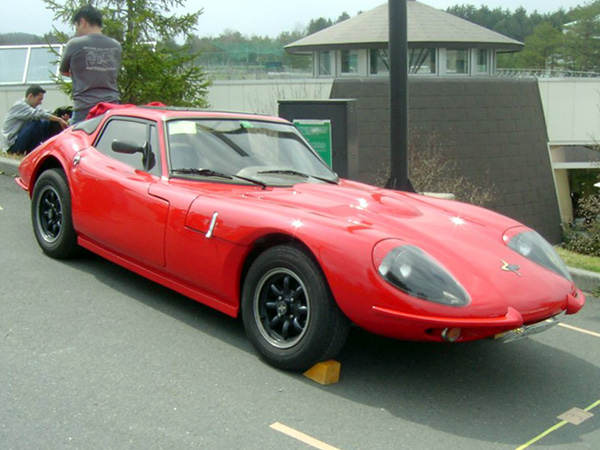
1967-1969 1600GT
The 1600 followed the 1500/1650 with the introduction of Fords new 1600 crossflow engine. The car was virtually identical to the 1500 / 1650, with a few minor alterations. Of all the early series cars, this proved to be one of the most popular with around 200 cars being built at Greenland Mills, Bradford on Avon between 1967 and 1969.
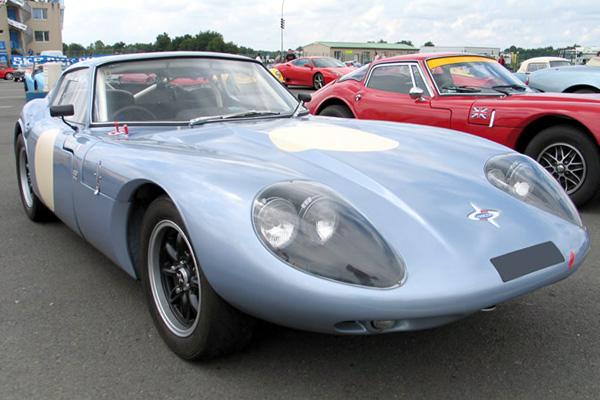
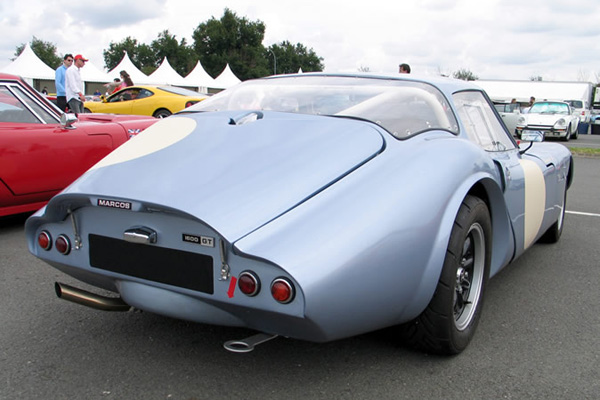
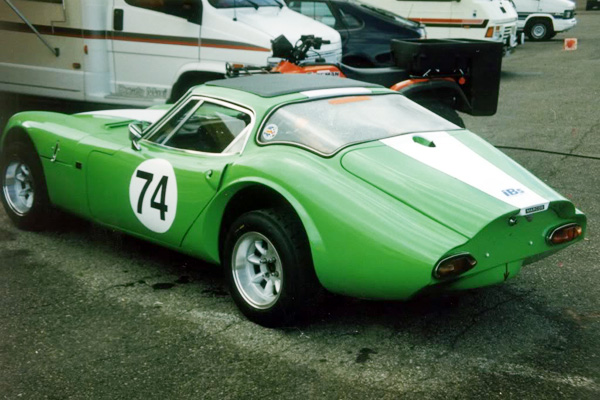
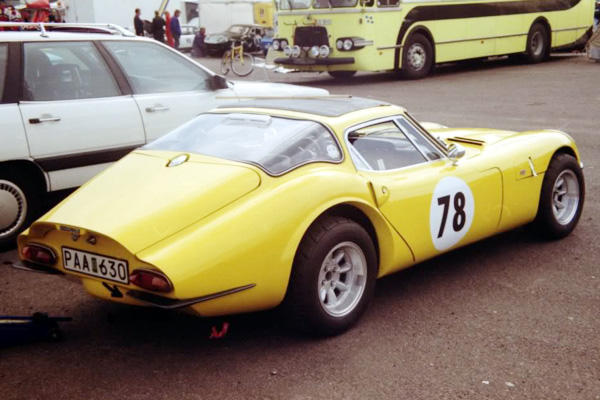
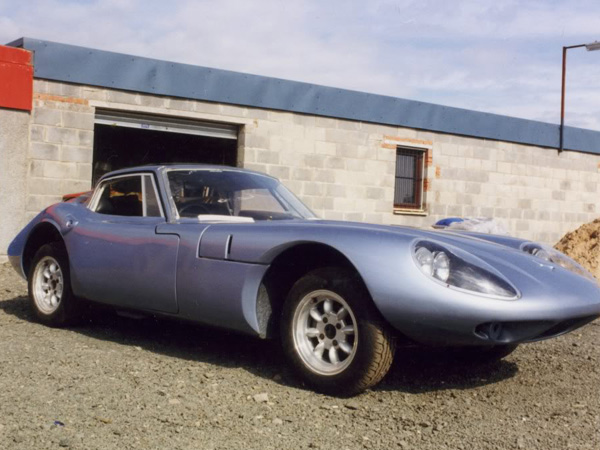
1969 3000GT
Wooden Chassis
In 1969 the Marcos 3 litre was introduced using the Ford V6 engine and gearbox. Changes in the car included an upholstered dash, power bulge on the bonnet and electric windows. 119 cars were built at Greenland Mills, Bradford on Avon.
Metal Chassis
In 1969 now based in Westbury, Marcos introduced the Metal chassis car. Visually similar to the 3 litre wooden chassied car, but utilising a 1.5 inch square tubular steel chassis. 196 cars were made.
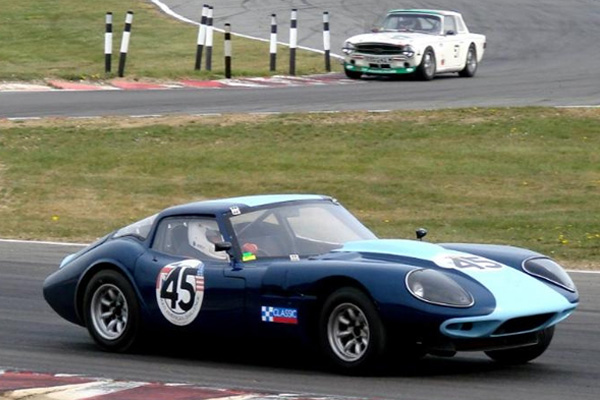
Excellent looking - Marcos Lemans Karlskoga
The car's details are unknown.
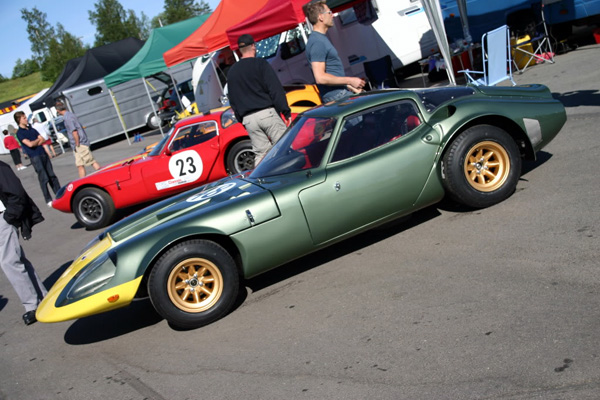
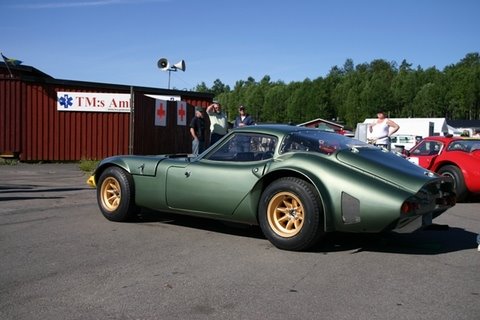
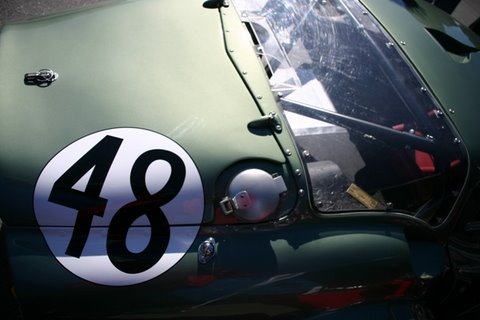
1965 Mini Marcos by Malcolm Newell
In 1965, the only Marcos not designed by Dennis Adams other than the original Costin Xylon was unveiled. The Malcolm Newell designed Mini Marcos was intended to fill the gap for a cheap GT sportscar and it was based, as the name suggests, on the Mini. At GBP199 for a bodyshell and windscreen, the Mini Marcos certainly fulfilled the 'cheap' part.
The 'unconventional' styling was dictated by the decision that the car should take the Mini components in unmodified form, the bulbous front housing the standard Mini radiator.
Whilst few would call the Mini Marcos an attractive car, it has proved a highly effective competition car. In 1966, a Mini Marcos was the only British car to finish at Le Mans and it has competed in numerous forms of motorsport ever since its release.
Perhaps the Mini Marcos' greatest claim to fame is the fact that it was the first Corgi 'Golden Jacks' car with removable wheels. Ironically, this and the various GT Corgi Marcos cars, sold in hundreds of thousands, whilst the real thing is a rarity, often unknown even to car enthusiasts.
At one point the moulds and rights to the Mini Marcos were sold and eventually it metamorphised into the well regarded Midas. However, Midas went bust and the terms of the original sale were such that in such an event the rights to the Mini Marcos would revert to Marcos, even though the Midas was bought up and revived.
In 1991, mainly due to demand for all things Mini from Japan, the unthinkable happened and the Mini Marcos went back into production. Models bound for Japan had catalytic convertor equipped 1.3 Cooper engines and air conditioning.
Richard Porter of the Mini Marcos Owner's Club writes :
There's a lot more that could be said about the history of the MM - it's evolution from the D.A.R.T. (which was the prototype for the Mini Jem). The split between Jem and Dizzy Addicott led to two cars instead of one, and the Mini Marcos was designed (well put together :-) in double quick time to fill the gap.
The Mini Jem, so-named by Jeremy Delmar-Morgan and not Marsh, appeared a year after the Mini Marcos. Although some Mini Marcoses had appeared in 1965 (Geoff Mabbs thrashed the opposition on the car's first outing at Castle Combe in September '65) it was officially launched at the Racing Car Show at Earls Court in January 1966. The Jem was launched at the same show in 1967.
Sadly the Mini Marcos is no longer a current model, though Marcos would consider a licensing deal if someone wanted to produce it. The last Mk. V shell left the factory in June 1995 and was sold to a customer in Switzerland. 65 Mark Vs were built, of which only ten were exported to Japan.
According to the Club's records at least 1260 Mini Marcoses were built including the Harold Dermott Mk. IVs.
Richard added this on the Mini Marcos in December 1996...
Since I wrote the bit about the Mini Marcos there have been some developments. Two more Mini Marcos Mk. V shells have been produced as "spare parts" for a French outfit that intends to race them. There was a sufgestion that more could be produced for a one-marque series but whether that comes about remains to be seen! The last I heard was that the two shells were sitting in the factory wrapped in polythene. My other discovery is not new, but I have learned a little more about the South African and Irish Mini Marcoses. Some 40 cars were produced under licence in Pietermaritzburg for the South African market and mostly used for racing. Another batch of 40 was made under licence in the Republic of Ireland (body numbers MI1 to MI40). This brings the total to at least 1340 cars.

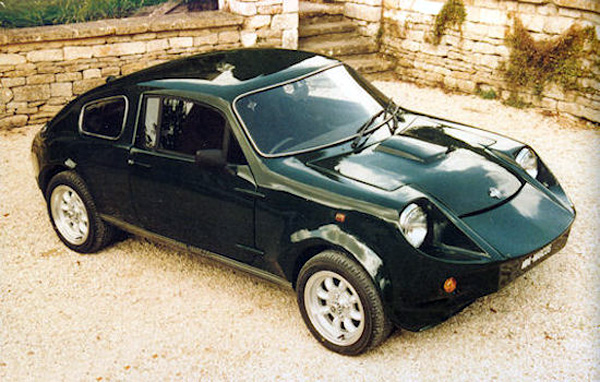
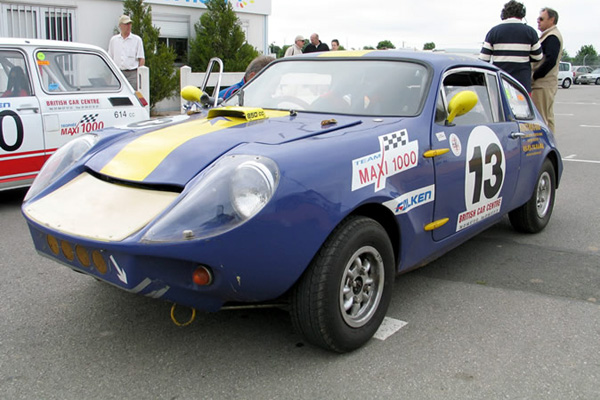
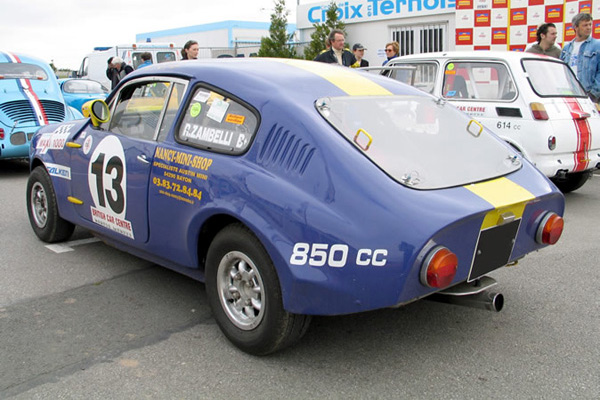
1968 Marcos Mantis XP
The original Marcos Mantis was produced in 1968. Powered by a Formula 1 Repco Brabham engine, It was a one off car built for racing, and was not intended for production. The XP now resides in the USA.
The Mantis name was first used when Marcos decided to build a true sportsracing car. and the Mantis 4 seater.
The car was built to accomodate the BRM-Repco V8 and was, to date, Marcos' only mid-engined car. The car was angular, borrowing a few styling hints from the Adams' Probes.
The car only raced at Spa, in 1968, when it ran reasonably until the electrics failed in torrential rain.
The single car built was sold to the States and is still there, where it still used, albeit (at present) as a highdays and holidays road car (fitted with a Buick V8).
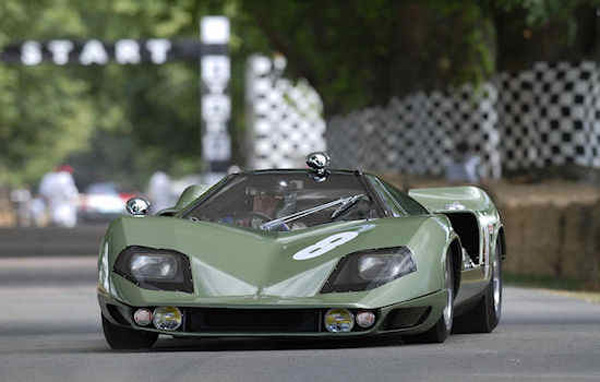






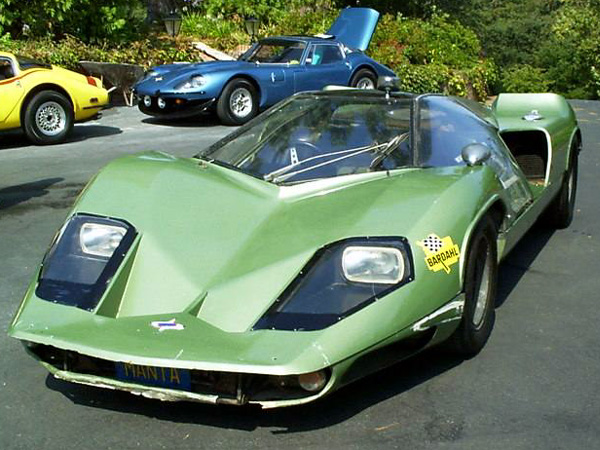
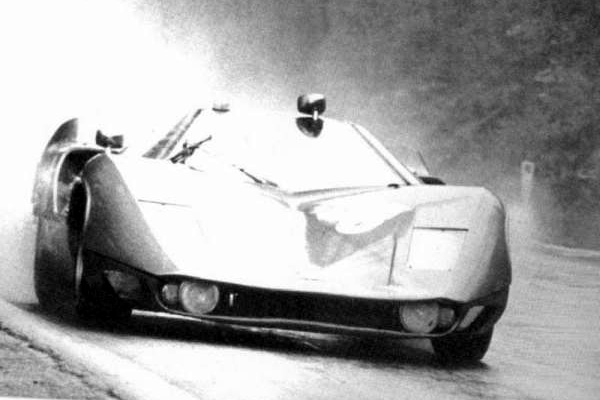
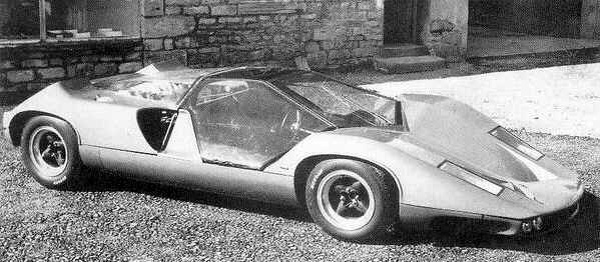
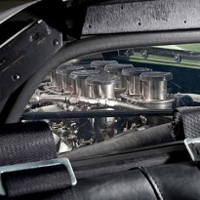
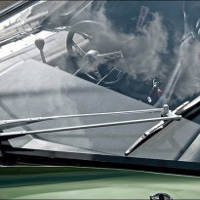
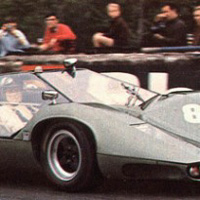
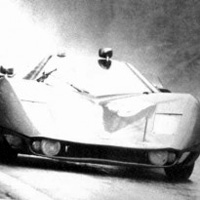
Back in 1968, Marcos built a pure bred racing sportscar, the Mantis XP. This Dennis Adams designed sportsracer was designed to compete with the likes of the Ford 3L and the Ferrari P4. Mid-engined, wooden chassised and fitted with a Brabham Repco V8, it was a strikingly modern design.
The car was intended to race at Le Mans, but actually only raced at Spa, in a very wet race. After that, it was used (with a Buick V8) as a road car by Jem Marsh before issues with purchase tax led to it being sold to the US.